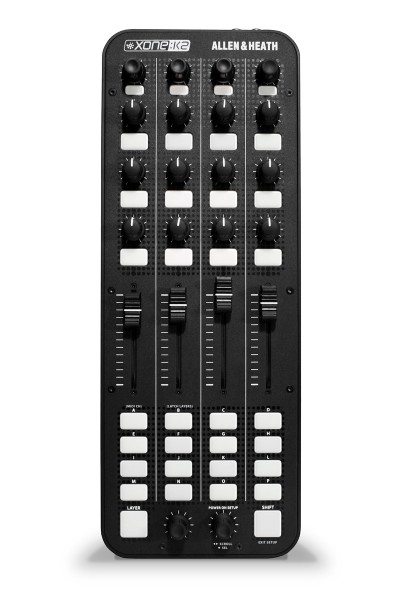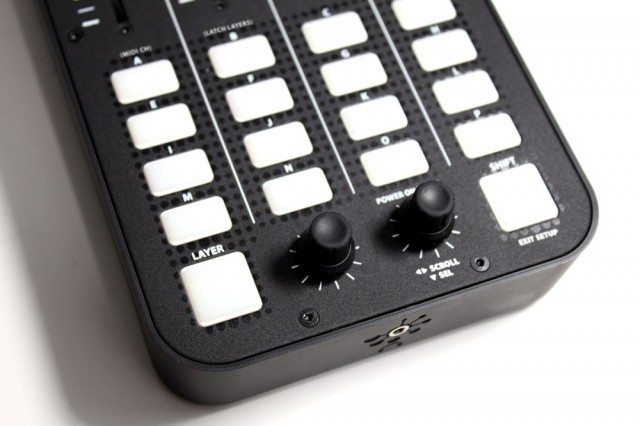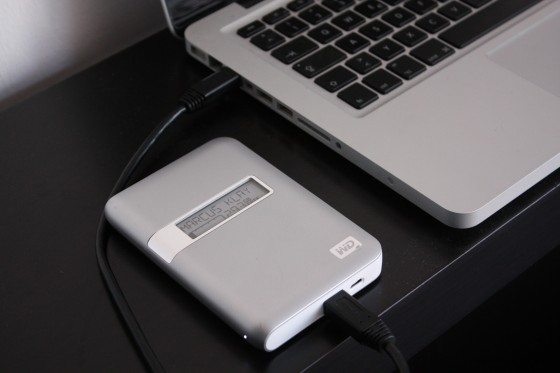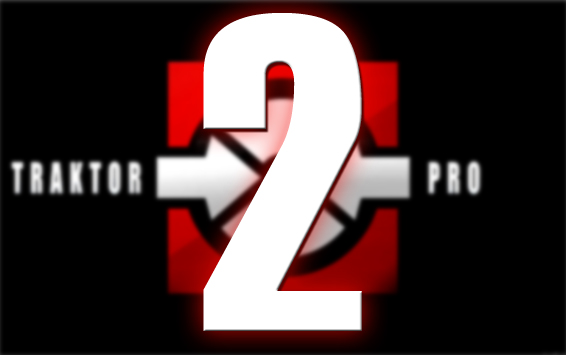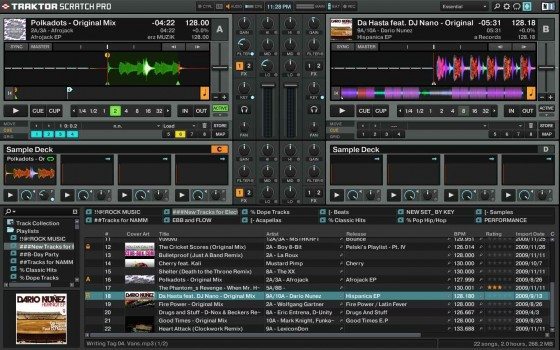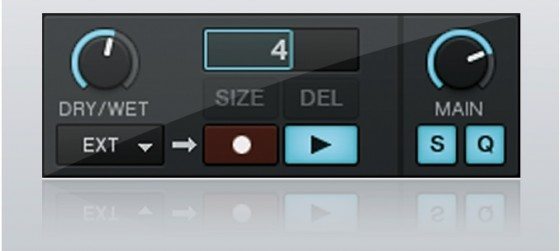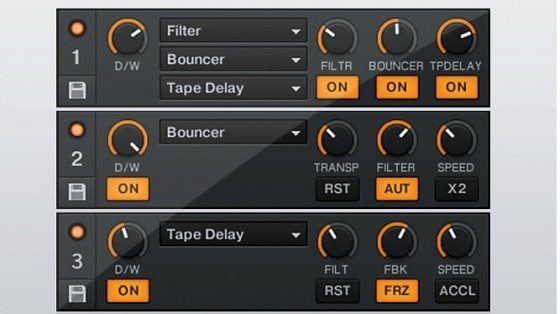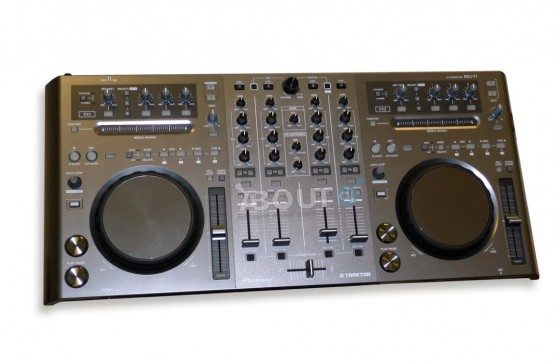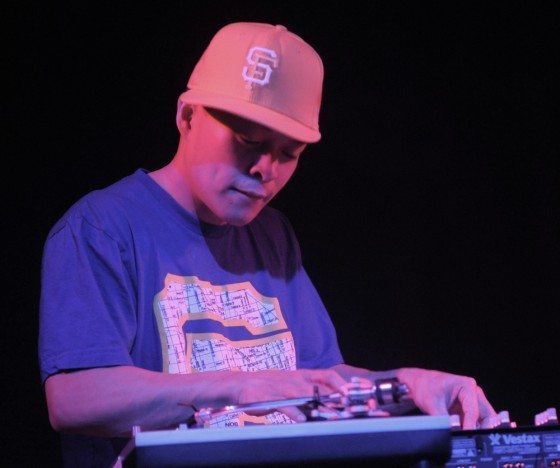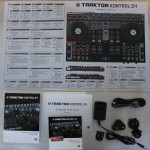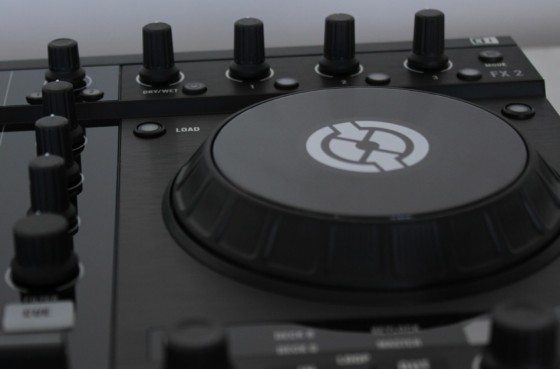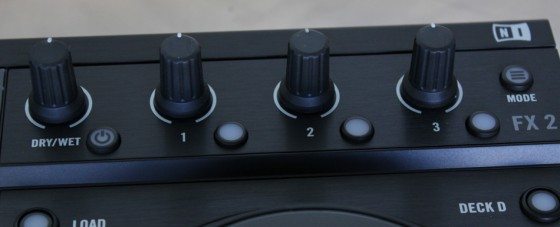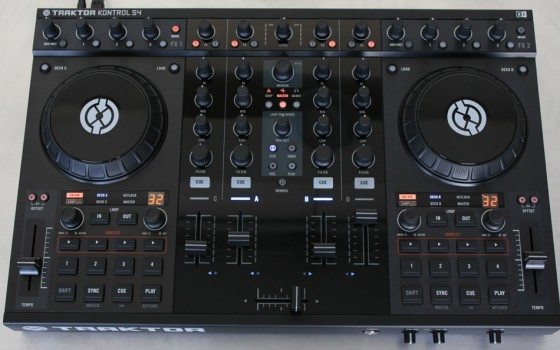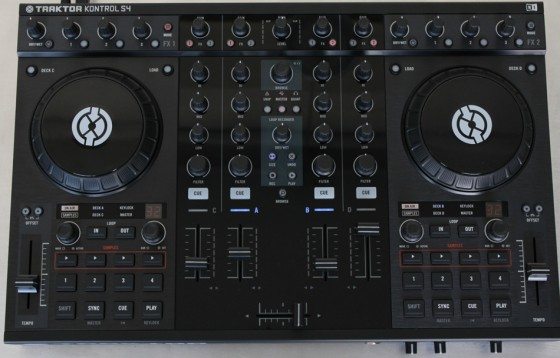
Pioneer introduces new foldable headphones for outdoor use with high-quality sound production.
31 August 2011 Everything: the headband, the resin hanger arms and the earpieces themselves have been designed to reproduce top quality sound for a very long time. With the Pioneer logo machined into the earpieces, the finish is neat and stylish.The SE-MJ591's newly developed 40 mm driver reproduces sound quality just as it has been recorded. An aluminium vibrating plate for crystal clear high frequency detail at all listening levels, whereas a PEEK film edge enforces the headphones' faithful sound reproduction by guaranteeing straight and smooth mid-low frequencies.Ample head and ear padding fit superbly well on top of the head as well as over the ears.There is a detachable single side cord for direct connection to audio source devices. The foldable headphones come with a protective box and carrying case to keep them safe at all times.The SE-MJ591 will be available in stores from the end of October onwards.
Allen and Heath today announced a new side car controller similar to the x1 with a built in sound card and internal links to combine multiple units. A blank canvas, the midi controller has no suggested purpose, so we are excited to see how you might us the new Xone K2 from Allen and Heath.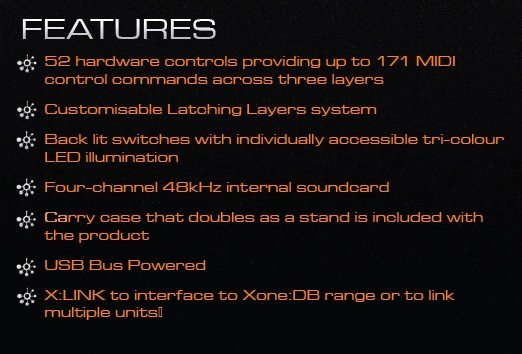
 the Allen and Heath K2 controller will ship with a matching case that brings them up to mixer height.
the Allen and Heath K2 controller will ship with a matching case that brings them up to mixer height.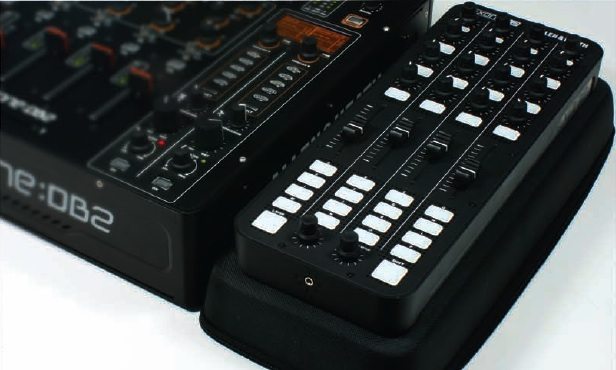
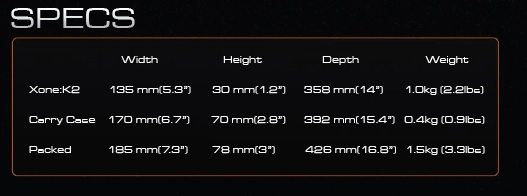 Latching Layers
Latching Layers
By assigning controls to multiple layers you can give a single physical control up to 3 functions. You can configure all, some or none of K2’s controls to be linked to the latching layers system. As a quick visual reminder, when toggling through layers all switches assigned to a particular layer will illuminate in the appropriate color.
Native Instruments Announces Maschine Mikro, Maschine 1.7 & iMaschine App
Native Instruments has announced Maschine Mikro, an affordable, entry-level on ramp into the world of its excellent groove production system. By combining the full-featured Maschine software with a streamlined and compact controller, Maschine Mikro makes the acclaimed tactile and intuitive music creation approach of MASCHINE available at a significantly reduced physical footprint and price. At the same time, the new 1.7 software version provides advanced integration with the instruments and effects in the Komplete 8 and Komplete 8 Ultimate bundle both for Maschine and Maschine Mikro users.
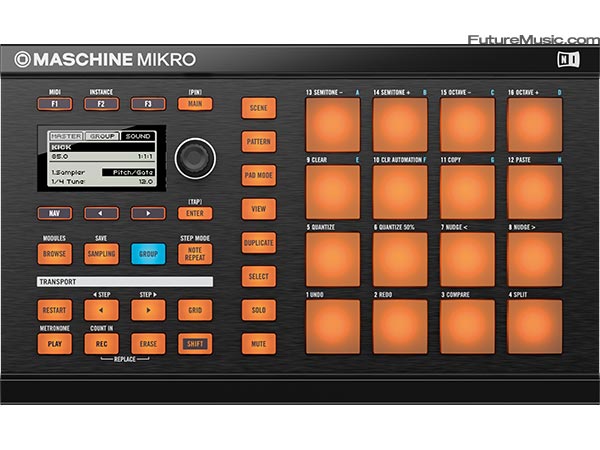 Maschine Mikro is centered around a portable controller that provides hands-on control of the central Maschine features at two-thirds of the size and weight of the full-sized hardware. Utilizing a single display and a dynamically assigned high-resolution master encoder to enable its compact footprint, the bus-powered Mikro controller retains the distinctive full-sized 4×4 matrix of pressure-sensitive, dynamically backlit Maschine drum pads.
Maschine Mikro is centered around a portable controller that provides hands-on control of the central Maschine features at two-thirds of the size and weight of the full-sized hardware. Utilizing a single display and a dynamically assigned high-resolution master encoder to enable its compact footprint, the bus-powered Mikro controller retains the distinctive full-sized 4×4 matrix of pressure-sensitive, dynamically backlit Maschine drum pads.
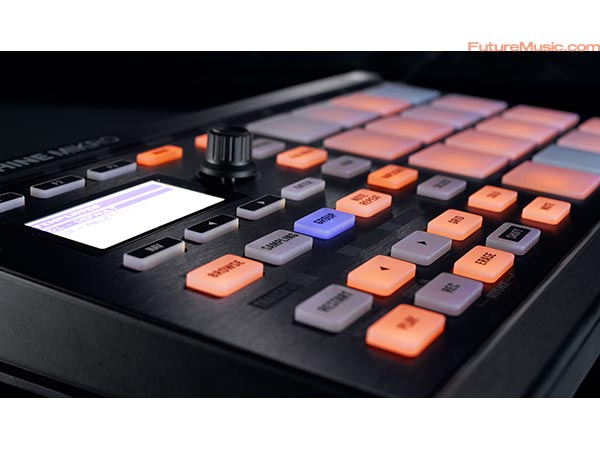 Maschine Mikro includes the full-featured Maschine software with its versatile pattern-based live and step sequencing, VST and AU plug-in hosting, real-time audio recording, sample editing and advanced multi-effects. The Mikro version also contains the full 6 GB Maschine sound library, expandable with the series of Maschine Expansions, as well as the free Komplete Elements sound collection. With the new 1.7 software version, both Maschine products now also benefit from advanced integration with Komplete 8 and Komplete 8 Ultimate, providing advanced sound browsing and parameter mapping for all instruments and effects contained in the bundle.
Maschine Mikro includes the full-featured Maschine software with its versatile pattern-based live and step sequencing, VST and AU plug-in hosting, real-time audio recording, sample editing and advanced multi-effects. The Mikro version also contains the full 6 GB Maschine sound library, expandable with the series of Maschine Expansions, as well as the free Komplete Elements sound collection. With the new 1.7 software version, both Maschine products now also benefit from advanced integration with Komplete 8 and Komplete 8 Ultimate, providing advanced sound browsing and parameter mapping for all instruments and effects contained in the bundle.


To further complement the growing Maschine product range, Native Instruments is also about to release iMaschine, an iOS software that brings intuitive groove creation to the iPhone and iPod touch platform. With four tracks, audio sampling, high-quality effects and an expandable arsenal of professional instruments and drum sounds from the regular Maschine library, iMaschine allows users to sketch grooves on the go, and later transfer them into the full Maschine software for detailed editing and arrangement. iMaschine is planned for release through the Apple App Store in October.
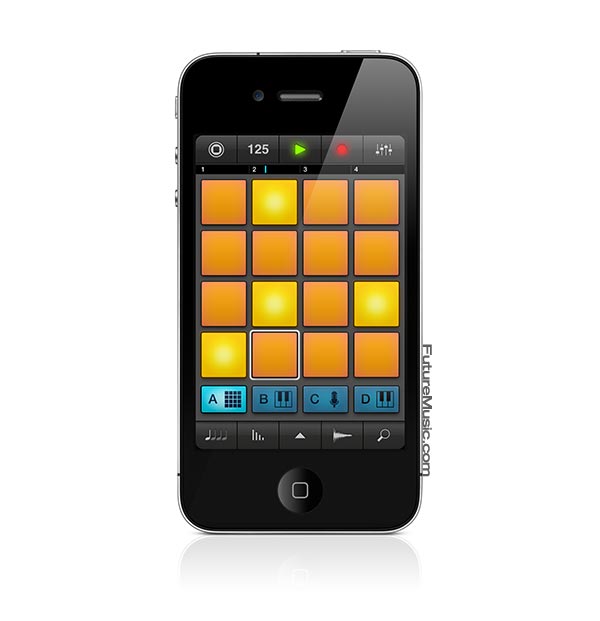 The Future: Great move by Native, and just in time for the Holiday’s, to ratchet up their sales figures. The smaller version works not only as an entry-level model for new customers, but also for seasoned Maschine veterans who may want an even smaller model for performance or “on the move” duties. We secretly wish that NI will address “on location” beat-making by developing an all-in-one, battery-powered Maschine model that can run on it’s own, without the need for a laptop (think MPC500 or Tha BeatThang) but that may be a moot point with today’s smaller laptops.
The Future: Great move by Native, and just in time for the Holiday’s, to ratchet up their sales figures. The smaller version works not only as an entry-level model for new customers, but also for seasoned Maschine veterans who may want an even smaller model for performance or “on the move” duties. We secretly wish that NI will address “on location” beat-making by developing an all-in-one, battery-powered Maschine model that can run on it’s own, without the need for a laptop (think MPC500 or Tha BeatThang) but that may be a moot point with today’s smaller laptops.
The Mikro should street close to $300, which makes it very easy for users to enter the Native ecosystem. If NI continues to make Maschine the focus of its gear solar system, as we predicted when it first bowed, we can’t wait to see it blossom into a full-on DAW with a distinctive Native mind-set.
Allen and Heath today announced a new side car controller similar to the x1 with a built in sound card and internal links to combine multiple units. A blank canvas, the midi controller has no suggested purpose, so we are excited to see how you might us the new Xone K2 from Allen and Heath.

 the Allen and Heath K2 controller will ship with a matching case that brings them up to mixer height.
the Allen and Heath K2 controller will ship with a matching case that brings them up to mixer height.
 Latching Layers
Latching LayersBy assigning controls to multiple layers you can give a single physical control up to 3 functions. You can configure all, some or none of K2’s controls to be linked to the latching layers system. As a quick visual reminder, when toggling through layers all switches assigned to a particular layer will illuminate in the appropriate color.
Native Instruments has announced Maschine Mikro, an affordable, entry-level on ramp into the world of its excellent groove production system. By combining the full-featured Maschine software with a streamlined and compact controller, Maschine Mikro makes the acclaimed tactile and intuitive music creation approach of MASCHINE available at a significantly reduced physical footprint and price. At the same time, the new 1.7 software version provides advanced integration with the instruments and effects in the Komplete 8 and Komplete 8 Ultimate bundle both for Maschine and Maschine Mikro users.
 Maschine Mikro is centered around a portable controller that provides hands-on control of the central Maschine features at two-thirds of the size and weight of the full-sized hardware. Utilizing a single display and a dynamically assigned high-resolution master encoder to enable its compact footprint, the bus-powered Mikro controller retains the distinctive full-sized 4×4 matrix of pressure-sensitive, dynamically backlit Maschine drum pads.
Maschine Mikro is centered around a portable controller that provides hands-on control of the central Maschine features at two-thirds of the size and weight of the full-sized hardware. Utilizing a single display and a dynamically assigned high-resolution master encoder to enable its compact footprint, the bus-powered Mikro controller retains the distinctive full-sized 4×4 matrix of pressure-sensitive, dynamically backlit Maschine drum pads.
 Maschine Mikro includes the full-featured Maschine software with its versatile pattern-based live and step sequencing, VST and AU plug-in hosting, real-time audio recording, sample editing and advanced multi-effects. The Mikro version also contains the full 6 GB Maschine sound library, expandable with the series of Maschine Expansions, as well as the free Komplete Elements sound collection. With the new 1.7 software version, both Maschine products now also benefit from advanced integration with Komplete 8 and Komplete 8 Ultimate, providing advanced sound browsing and parameter mapping for all instruments and effects contained in the bundle.
Maschine Mikro includes the full-featured Maschine software with its versatile pattern-based live and step sequencing, VST and AU plug-in hosting, real-time audio recording, sample editing and advanced multi-effects. The Mikro version also contains the full 6 GB Maschine sound library, expandable with the series of Maschine Expansions, as well as the free Komplete Elements sound collection. With the new 1.7 software version, both Maschine products now also benefit from advanced integration with Komplete 8 and Komplete 8 Ultimate, providing advanced sound browsing and parameter mapping for all instruments and effects contained in the bundle.


To further complement the growing Maschine product range, Native Instruments is also about to release iMaschine, an iOS software that brings intuitive groove creation to the iPhone and iPod touch platform. With four tracks, audio sampling, high-quality effects and an expandable arsenal of professional instruments and drum sounds from the regular Maschine library, iMaschine allows users to sketch grooves on the go, and later transfer them into the full Maschine software for detailed editing and arrangement. iMaschine is planned for release through the Apple App Store in October.
 The Future: Great move by Native, and just in time for the Holiday’s, to ratchet up their sales figures. The smaller version works not only as an entry-level model for new customers, but also for seasoned Maschine veterans who may want an even smaller model for performance or “on the move” duties. We secretly wish that NI will address “on location” beat-making by developing an all-in-one, battery-powered Maschine model that can run on it’s own, without the need for a laptop (think MPC500 or Tha BeatThang) but that may be a moot point with today’s smaller laptops.
The Future: Great move by Native, and just in time for the Holiday’s, to ratchet up their sales figures. The smaller version works not only as an entry-level model for new customers, but also for seasoned Maschine veterans who may want an even smaller model for performance or “on the move” duties. We secretly wish that NI will address “on location” beat-making by developing an all-in-one, battery-powered Maschine model that can run on it’s own, without the need for a laptop (think MPC500 or Tha BeatThang) but that may be a moot point with today’s smaller laptops.
The Mikro should street close to $300, which makes it very easy for users to enter the Native ecosystem. If NI continues to make Maschine the focus of its gear solar system, as we predicted when it first bowed, we can’t wait to see it blossom into a full-on DAW with a distinctive Native mind-set.


To further complement the growing Maschine product range, Native Instruments is also about to release iMaschine, an iOS software that brings intuitive groove creation to the iPhone and iPod touch platform. With four tracks, audio sampling, high-quality effects and an expandable arsenal of professional instruments and drum sounds from the regular Maschine library, iMaschine allows users to sketch grooves on the go, and later transfer them into the full Maschine software for detailed editing and arrangement. iMaschine is planned for release through the Apple App Store in October.

The Mikro should street close to $300, which makes it very easy for users to enter the Native ecosystem. If NI continues to make Maschine the focus of its gear solar system, as we predicted when it first bowed, we can’t wait to see it blossom into a full-on DAW with a distinctive Native mind-set.
Sónar 2011 | Tech Beats Review
Native Instruments’ Maschine Mikro will be available in October for a suggested retail price of $399 / €349. Maschine 1.7 is out now. iMaschine will debut in October, no price has been announced.
Sonar 2011 came and went in a flash. Barcelona is certainly the place to be at this time of the year for any dance music enthusiast. So where were the best parties - Sonar on? Sonar off? The beach? Rooftop terraces? The Med' on a boat? The city certainly had plenty to choose from. Tech Beats went along and covered a few of the many parties in the Barcelona over the long weekend, and we've shared our thoughts about them below.
Kieran
Absolutely loved Barcelona. Absolutely loved the city's vibe over the weekend. Unfortunately I was absolutely disappointed with Sonar the festival itself.
I knew going into the weekend knowing that the lineup for Sonar by night didn't exactly excite me. I could barely tell you a few of the acts that I was truly looking forward to seeing. Surely sacrificing the Hot Natured and East Ender parties would be worth it for the atmosphere at the official Sonar by night festival? Wrong.
Sonar by night was really disappointing for me. I was expecting the festival atmosphere to make up for its line up, for it to be quirky, full of things to do that give it an identity and make it stand out from other festivals. Instead, it just looked to me like a convention centre had been hired out, four identical stages built , and then artists thrown on one after the other, playing 45 minute / 1 hour long sets. In between each there was an infuriating 5-10 minute break where the same deadmau5 track was played every time.
Ok, Ok, maybe I'm being a bit harsh. The main stage, Sonar Club, was gigantic, and pretty epic when filled up. What saved Sonar for me however was Paul Kalkbrenner's set, of which the last 30 minutes was awesome. I'd never seen the Berlin Calling star live before, and he played an excellent uplifting set to close the Sonar Pub stage. I especially enjoyed the guy selling Estrella attached to his back who was stood next to me during that time - I must have gone through a beer every 5 minutes.
The other parties in Barcelona over the weekend were excellent. Warehoused's 1st Birthday Party was a great way to start the weekend, with Solomon & H.O.S.H stealing the show with some groovy deep vibes in the packed Mephisto Club. Shout out to Wesley Blake who put a great party on. I've had Solomun's Around remix in my head ever since.
The mobilee rooftop parties at Hotel Silken Diagonal were a big highlight of the weekend. A perfect rooftop location to host the likes of Pan Pot, Sebo K and Martin Landsky on both Friday and Saturday which set us up for the rest of the night. Check out our video below of Pan Pot dropping a big remix of Claude Von Stroke's classic Who's Afraid of Detroit.
For me the best was saved til last. The Secretsundaze party at La Terrazza was absolutely massive. Tech and Deep House tunes kept the crowd buzzing till the early hours and when the music stopped no one seemed ready to stop partying. The vibe was spot and and it was one of the friendliest crowds I've been part of at a club that I can remember.
I'll definitely be returning to Barcelona, hopefully this time next year. Will I be going to the official Sonar festival however? That's a different question.
Will
First off, let me say this: when I first heard of East Ender, I thought it would be a good opportunity to bridge the gap between the other events I had planned to attend. In hindsight however, I would have made the pilgrimage to Barcelona just to attend East Ender – it could have easily been a stand-alone festival. For those of you favouring the underground house / techno scene, this sort of line up is second to none. The only real problem here is – how the hell do you choose what day to attend with this lineup?
Part of the Tech Beats crew decided to go for the Crosstown Rebels / SCI-TEC combo on the second day. So we headed over to the park located in Port Forum. As soon as we arrived we were drawn to the Crosstown Rebels stage where we caught the end of Art Department’s set. These new ambassadors of the tripped out, deep and soulful sound that has made the Crosstown label so poplar these past years, did not disappoint. These guys are such talented producers, DJs and, to my surprise, even live performers as I discovered when one half of the duo grabbed the mic. Next up: Jamie Jones b2b with Seth Troxler. It was like watching a good tennis match -Troxler served up some tripped out tune and Jamie just kept knocking it out the park with a super cool and massive bassline. The crowd loved every minute of this display. My personal favourite was definitely when Seth rolled out the Visionquest remix of Dinky’s classic “Acid in my Fridge”.
After a while it was time to step it up a notch so we headed over to the SCI-TEC stage where the crowd was emphatically welcoming Dubfire. It didn’t take long for him to have the entire park thumping their fist in the air to his own brand of dark, bouncy, minimal techno. It was great to see the whole SCI-TEC crew rave on the stage supporting the head honcho. His set also included a new Gaiser tune which I have been waiting for since I first heard it being played by the man himself at Timewarp. Look out for this one it’s massive. My personal guess – coming up on Minus soon.
Overall, East Ender was smashing. Despite the massive crowd there was always space to dance and the atmosphere was electric. The only minor annoyance, in my opinion, was that you had to buy drink tickets and couldn’t pay cash at the bar.
Cadenza Boat Party (Will)
Picture this: you are cruising along Barcelona’s beautiful coastline on a pimped out boat with a Funktion One sound system, 200 fellow party people on board, the sun is shining in you face and all hands in the air as Reboot is about to drop some yet unreleased summer anthem. Pure bliss.
At first the Tech Beats crew was a bit worse for wear after only a few hours sleep following East Ender. This changed immediately as the boat pulled out and Lee Van Dowski started prepping the crowd for what was to be a memorable journey. The boat was filled with the kind of party folk that would happily serve you up their last slab of sun cream – lucky for us as the “minor” hangover made us forget all the essentials. The music provided by the Cadenza crew was tailored perfectly to the occasion. A fusion of feel-good and thumping house quite literally rocked the boat. I had been looking forward to see Maayan Nidam present her own brand of funk/disco infused, chuggy deep house. I wasn’t disappointed. For all of you who don’t know her check out her productions. Quality.
Two hours before the end of the journey a little taxi boat pulled up and Reboot stepped on board. After a little chit chat with the fellow DJs, he took to the decks and proceeded to smash his set. In fact he wouldn’t stop smashing his set so the captain was forced to circle the port for an extra two hours – no one was complaining.
Overall, a great experience. However the price was a little steep at 75€. But oh well, we all got a Cadenza hat in the end. That’s what I call value for money 
Joel
This was my second Sonar, I went in 2010 and had a great time. It was a real celebration of quality and I left with huge respect to the curators. The official event still had its benchmark sound-systems this year, but where did all the house music go? Where was all the techno?
Sonar 2011 might as well have been a dubstep festival curated by the BBC. Booking Steve Aoki was tasteless and criminal in its own right, but there was no balance to the lineup and the contrast from 2010 was striking. The music was so poor that I barely enjoyed a set until Paul Kalkbrenner and James Holden played the closing hours of Saturday. I don't like dubstep personally, but I get it, and I realise it is the year 2011 and it's the sound. That doesn't mean it's the only sound though, it was everywhere! Sonar is forward thinking, and dubstep deserves it's presence, but the rest of the slots should have been filled with fresh faces making waves in other scenes. As good as Annie Mac and Tiga were, they played old records and they're hardly in the forward thinking mould of Sonar so why are they even there?
Too much BBC, not enough techno.
2/5
Emily
I didn’t have any expectations of Sonar before arriving in Barcelona. It was going to be my first foreign festival and I knew it would be very different to any of my festival experiences in the UK.
We purposely booked a room at Hotel Diagonal for the Mobilee rooftop party. Unfortunately we didn’t arrive in time for the RA party on Thursday. Instead we headed over to Mephisto for ‘Warehoused’, particularly keen to see Wesley Blake, Solomun, H.O.S.H and Stimming. Not anticipating the queue for tickets we missed Wesley but made it to the dance floor just in time for Solomun and H.O.S.H. The venue was great, raw and stripped back, it reminded me slightly of DC10 in Ibiza - with a similar European crowd. All round a great vibe and a brilliant night.
The Mobilee terrace parties were a highlight of the weekend. Despite being limited to Hotel Diagonal residents, both days attracted a sizeable crowd - some clearly intended on continuing through to both Friday and Saturday night. Pan-pot delivered a set that not one person could resist moving too; overall a winning combination of sexy tech house, sun and cerveza. Everyone in the crowd was happy. This was one party I would definitely recommend to anyone considering Sonar next year.
My first impressions of Sonar by Night were slightly disappointing. There were only three different stages, one of which was the ‘Radio 1 Stage’ on Friday night. With the exception of Tiga, Henry Saiz, Underworld and Paul Kalkbrenner, I didn’t recognise most of the names on the line-up; I initially had hoped this was going to be a great opportunity to discover some new and local talent. There wasn’t much local talent but a lot of UK dub-step - ideal if your a dub-step fan. Nonetheless, the size of the main room was impressive and those occasions when it was full there was a great buzz from the crowd. In fact, the enthusiasm from the crowd was evident throughout both nights and continued into the first hours of daylight.
Not ready to part with the Sonar vibe by Sunday we found our way to the Secret Sundaze party at La Terrrazza. The setting was completely unexpected. A classy, open-air club tucked away in a old part of town on the Montjuic mountain. Five hours of laid-back deep house kept everyone content, no one even noticed the 5 minutes of light rainfall. After the music ended and everyone had been asked to leave there was a long walk down the mountain and a hunt for a free taxi; all completely worth it. Secret Sundaze had delivered on every level.
Overall a great first Sonar experience, although admittedly I wouldn’t return for another Sonar By Night party. It seems to me that Barcelona during Sonar is all about the off-parties. I certainly intend on returning next summer to sample some others and of course, re-visit the Mobilee terrace party.
How to EQ: A comprehensive guide for DJs
This is a comprehensive guide into the fine art of EQing, primarily for the use of DJs. Every mixer comes fitted with an EQ; it’s one of a DJ’s core tools and understanding how to use it properly is paramount to mastering the art of mixing. We’ll discuss how a DJ uses the EQ whilst mixing, by giving you an essential foundation understanding of the science behind equalising and why it is so necessary. Don’t let that phase you though, the concepts are simple and there'll be no need for textbooks.
What is an EQ?
Every record you hear is a combination of individual sounds mixed together by a producer. Every mix you hear is a combination of records mixed together by a DJ. The challenge for DJs is that playing two perfectly synced records over the top of each other causes the output to become distorted and unclear. Certain sounds will get lost in the mix because similar sounds are not audible when heard in parallel. Therefore the records clash.
So what is EQ? An equaliser (EQ) is simply a volume control that boosts/reduces the volumes of certain frequencies heard within a piece of audio. A typical DJ mixer will have two or more channels, each fed by their own audio input (E.g. a CDJ, turntable or digital DJing software). Each channel has its own individual EQ which a DJ uses to 'balance' the levels of different frequencies coming through the channels so that when they are heard as one, they sound audible, clear and undistorted.
How does the EQ work?
Understanding the science behind what causes the distortion and loss of clarity in audio is vitally important to mastering the delicate art of equalising.
Firstly, we must understand what it is that makes one sound different to another. Every sound is governed by its pitch, tone and volume. As we now know, an equaliser is just a volume control which raises/lowers certain frequencies (pitches) within a piece of audio.
Low frequency sounds include kick drums and bass notes, high frequency sounds include hi-hats and snares, whilst mid-frequency sounds are typically more melodic and percussive elements of a record. The image below shows the positions of each sound across the frequency spectrum in a techno record; high frequencies on the right, low frequencies are on the left. The Y axis on the spectrum represents the volume of the frequency.
The tone of an individual sounds is governed by its fundamental frequency, which is the loudest frequency that is audible within the sound. This fundamental frequency defines the key the sound is heard in. Think about the different keys on a piano or strings on a violin; each note struck has its own fundamental frequency and tone.
Why does a piano sound different to a violin, and why do they sound different when they are played in the same key (sharing the same fundamental frequency)?
No two analogue sounds can ever be the same. Each individual sound wave has its own unique harmonics and oscillates around the fundamental frequency in its own unique way creating its own flavour. This is why a piano sounds different to a violin even when played in the same key.
Controlling clipping
There are two core reasons why we must control the volume of certain frequencies with an EQ; the first is because of ‘clipping’.
Play a piece of audio at above the maximum volume that its amplifier can process and ‘clipping’ will occur, distorting the sound. This is best demonstrated visually:

So we need to control the volume of an audio signal being sent through the amplifier to avoid this occurring.
What happens when we play two identical sounds with the same fundamental frequency (in the same key) together at the same time?
In theory, no two pianos can sound the same, but hypothetically if we were to play two identical pianos at the same time in the same key, we would simply hear the output's volume rise. If it raises too far, clipping and distortion will occur so we must lower the master volume to compensate.

Now we un-mute the second piano and the master volume exceeds the maximum threshold of the amp', causing clipping.
What happens when we play two identical instruments together in different keys (fundamental frequencies)?
Play two sounds occupying completely different areas of the frequency spectrum together and both are clearly audible and the master volume stays level (except when a sound has wild harmonics which are audible in the whole frequency range). However, if the sounds are only slightly different keys (fundamental frequencies) then clipping will still occur. Hit two immediately neighbouring notes together on a piano and the sound will be off, try more distant neighbours and a nice chordy sound is produced; this is partly because the frequencies are no longer clashing.
Therefore, when we can identify a specific frequency clash that is causing the clipping, there is no need to lower the volume of the entire piece of audio, just around the frequency of the clash. To do this, we need an EQ.
What happens when we play a violin and a piano together in the same key (at the same fundamental frequency)?
When you play two different instruments together in the same key, you will not just hear a rise in volume, but combining the unique harmonics and oscillations of each instrument’s physics creates an altogether new sound. This may sound rather romantic, but the output is quite negative. This is the second core reason why the equaliser is essential: to maintain clarity and identity of the sounds. Think of the piano and the violin as two of your favourite records, combine them together and you can no longer hear either record, just a distorted loud mess.
It’s very much 2+2=3, until you throw an EQ into the mix...
An important note on how our hearing works
Before we discuss using the EQ itself in DJing, we must understand one last simple rule. Flick on your analogue radio or TV untuned and you will hear the fizzy sound known as white noise. This is the sound of all the frequencies being heard at once at the same volume.
Because of the way our hearing works, we hear high frequencies loudest; explaining why white noise sounds so high pitched. Why this occurs is not relevant to this piece...
Using the EQ for DJing
EQing is the art of allowing chosen individual sounds (as frequencies) within a mix to breathe. The trick is to avoid sounds in the same frequency clashing so that the output is crisp and audible for your audience's listening pleasure.
EQing is all about taking away; more is definitely less. Boosting volumes will cause distortion through clipping, kicking off a fight between similar sounds within a mix; one sound has to be allowed to ‘win’ by adjusting the EQ to cut the volume of the ‘losing’ channel.
Let’s take a look at your typical DJ mixer that chops the frequency range into three equalising volume knobs: high, middle and low.
The low frequency control
 Many will tell you that it is the low frequency sounds in a mix that clash the most and it is most important to control the ‘bottom end’ set. Whilst it is true that low frequency clashes cause the most audible distortion, all frequencies should be carefully managed in equal measure. A well-trained ear can detect any frequency clash within the human ear’s capability (between 20hz-20khz).
Many will tell you that it is the low frequency sounds in a mix that clash the most and it is most important to control the ‘bottom end’ set. Whilst it is true that low frequency clashes cause the most audible distortion, all frequencies should be carefully managed in equal measure. A well-trained ear can detect any frequency clash within the human ear’s capability (between 20hz-20khz).When mixing dance music, controlling the ‘bottom end’ of the mix will effectively control the most predominant record heard in the mix. This is because the bass sounds and kicks are the driving force within the record. Switching between the low frequencies between two records is a primary mixing technique employed by almost all DJs.
Because our ears hear low frequencies the quietest, bass sounds are often produced the loudest and right on the brink of clipping, so heavy EQing is often necessary to prevent distortion. We cannot cater for any more volume in this area, so we have to be firm with the LF control as completely killing the lows is often the only way to maintain a clear and undistorted output.
The middle frequency control
 Most of a records feel and atmosphere are defined by the middle frequencies. Even the defining flavours oscillating off a bassline spill into this frequency range. Some records will sound nice together without much interference here whilst others can sound dreadful.
Most of a records feel and atmosphere are defined by the middle frequencies. Even the defining flavours oscillating off a bassline spill into this frequency range. Some records will sound nice together without much interference here whilst others can sound dreadful.Your melodic elements are typically found within the vital middle frequencies of a record and they are particularly susceptible to clashes. Overlaying two melodies in a similar key will not just distort the sound, but it will create a new melody altogether; sometimes this sounds nice, but mostly it doesn’t. Control the predominant melodies in a mix by allowing one to ‘win’ by ducking the volume of the MF control on the unfavoured channel.
If there is one area where a boost can be forgiven, it is the middle frequencies as they are produced quieter than the lows, leaving less chance of clipping.
The high frequency control
 Perhaps the least used of the three. Subtlety is the name of the game in controlling the highs. Shakers, hi-hats and snares give records energy and important balance. Remember that our ears are more sensitive to high frequency sounds, hearing them louder. The result is producers mix high frequency sounds much quieter which makes them more sensitive to subtle changes in volume. Try minor adjustments to volume rather than complete kills. Use your ears!
Perhaps the least used of the three. Subtlety is the name of the game in controlling the highs. Shakers, hi-hats and snares give records energy and important balance. Remember that our ears are more sensitive to high frequency sounds, hearing them louder. The result is producers mix high frequency sounds much quieter which makes them more sensitive to subtle changes in volume. Try minor adjustments to volume rather than complete kills. Use your ears!Hi-hats and shakers are almost entirely within the high frequency range (snares are often around the crossover point of the HF and MF control so can be heard in both ranges). Effectively you have an on/off adjustment for these sounds within this control. Try playing around by adding the highs at the end of a bar, it will sound like you have added a layer to the sound.
Mr. ‘2+2=5’ vs. The Claustrophobe
There are two schools of DJing. Firstly there are those DJs who believe a record should sound the way the producer intended it, allowing tracks maximum room to breathe and avoiding long transitions which require heavy EQing to tame incoming/outbound records.
Secondly, there is the theory that 2+2=5. Two records merged together and tamed into a crisp audible output through careful EQing to deliver a new and unique listening experience.
I am personally all for the latter; creativity is what earns a DJ his keep. This is why I’d choose an Allen & Heath Xone 92 as my mixer of choice any day. Its four band precise EQ and clean filters allow DJs to shape a beautiful end product almost purely through equalising.
It is difficult to put actual mixing techniques into words, but understanding the dynamics of the sound will help you understand what it is you are controlling with the EQ; this can only improve your mixing.
I hope you’ve learned a thing or two about EQing in this guide. If you enjoyed it, let me know, please just drop me a comment or email me at: joel@techbeats.co.uk with any questions.
RELEASED: Serato Scratch Live v2.3
Posted by Gizmo on August 11, 2011 :

We've been here before just a couple of weeks ago, so this is nothing more than an "it's here" message. The beta bugs have hopefully been squished and final release of Scratch Live v2.3 is ready for prime time. Oh and there's a video after the jump, that is considerably more interesting than the words that follow. Or is it?
PRESS RELEASE - SERATO SCRATCH LIVE 2.3
Auckland, New Zealand (August 10, 2011) - Serato Audio Research announce the release of Serato Scratch Live 2.3, the latest free software update for Serato Scratch Live DJs.
This version includes a number of new additions as well as a healthy dose of maintenance, to continue the unparalleled level of stability and performance that Serato software is renown for.
The delivery of two Scratch Live interfaces in the last twelve months; the Rane SL 2 and Rane SL 4, established a new benchmark for sound quality in the digital vinyl market. Serato Scratch Live 2.3 provides support for all Rane Scratch Live hardware, allowing DJs to plug-and-play on any setup quickly and easily.
The addition of new Cue Point Labels means DJs can now name and reference their cue points to jump to verses, breakdowns or kicks and snares, lightning fast.
Following the successful implementation of HID support for the Pioneer CDJ-2000 and CDJ-900 in 2.1.1, Serato are pleased to include new support for the popular Pioneer CDJ-350 and CDJ-850.
Now, when the CDJs are connected via USB to a computer, songs, crates, waveforms, cue points and loops can be all accessed from the Pioneer CDJ-350 and CDJ-850 display.
“Scratch Live is constantly evolving,” says General Manager of Serato, Sam Gribben. “Including support for the Pioneer CDJ-350 and CDJ-850 extends the control options available to our DJs. We constantly strive to offer this type of flexibility and new creative features, whilst improving on our rock solid performance, and version 2.3 is no exception.”
Finalized Core Audio and ASIO drivers for the Rane SL 3 and Sixty-Eight are included in this version, as well as updated 64-bit drivers for Mac users. On top of this, Serato have tweaked THRU mode indication and screen workflow to optimize the user experience for Scratch Live DJs.
Scratch Live 2.3 is a free software update available now from www.serato.com.
Features
- Cue Point Labels.
- 64-bit Drivers For Mac.
- Better software THRU mode indication for the SL 2, SL 3 and SL 4.
- Core Audio/ASIO drivers for the SL 3 and Sixty-Eight.
- Improved Scratch Live user interface layout for minimum screen resolutions.
- Added support for the Pioneer CDJ-350.
- Added support for the Pioneer CDJ-850.
- Support for all current Rane Scratch Live Hardware (SL 1, SL 2, SL 3, SL 4, TTM 57SL, Sixty-Eight).
Like many, I probably skim over these releases, cherry picking out the bits that matter to me personally. I love named cue points, like really love the idea. But it's the other stuff that I've largely ignored to a degree up until now. Being much more of a vinyl head, I've been less interested in SSL or any other DVS software working with CDJs. My mindset has been set by fairly shoddy performance from using CD timecode one time many years ago.
But now, when you look at the video, the wonders of HID bring SSL and CDJs together as one coherent unit. It's like looking at an ITCH unit being used, especially with the 2 way communication on screen. And I'm guessing that jog wheel performance is second to none as well.
ASIO and Core Audio drivers are very useful as well. For too long, the SL boxes have acted as little more than dongles for SSL. But now they can be used for other software. Indeed, I've got an SL-3 installed and running with Torq and Traktor (not Scratch obviously). It's also available at a system level to use as a regular audio interface - just like ITCH devices are too.
And when you combine this with the visual direction of and architecture of ITCH 2, the lines between SSL and ITCH are considerably more blurred than they were a short time ago. SSL for me has always been a DVS and more controller hostile than Traktor. But by embracing HID, Scratch Live is much nearer to Traktor than it ever was. Support is still reasonably sparse - you're not likely to get full jogwheel support overnight for every controller on the planet, but the industry appears to be moving in a direction aka HID that will enable better integration.
I still stand by what I said years ago. I would prefer a unified new product, where video, DVS, effects or whatever out-there ideas can be added as plugins - ideally paid so that Serato can sustain a solid revenue stream and build for the future. And this additional functionality needn't come from Serato either. I can imagine a scenario where plugins are sold and a licence fee paid to Serato. Christ knows that Serato only have so much resource to play with. Offloading some of that to 3rd parties, but still with a revenue stream could work. The expectation of SSL being free for ever is unreasonable and unsustainable.
Anyway, that hopefully is the future. For now, go and grab yourself the update and have a play.
Read more: http://www.skratchworx.com/newspage.php4?fn_mode=comments&fn_id=1770#ixzz1VtF5BLjW
ENTREVISTA CON K.E.E.N.E. DESDE PANAMA
ENTREVISTA CON DORIAN CHAVEZ DESDE CHILE

Sorting Your DJ Music Library: The Klay System
These days, it seems like every DJ is using a laptop but they feel like a double edged sword, providing opportunity and creating new obstacles to creativity at the same time. Have you ever been stuck at a critical moment thinking, “Sh&%- what was the name of that song?! – It would be perfect!” Only to watch the countdown wind down to zero and then have no choice but to drop a dancefloor killer. In this article I will attempt to provide a few suggestions for music tagging that will help organize your giant collection into something more navigable.This article concentrates on the NI Traktor software I use, but the idea can be used for other software as well. We advocate using the tools that fit your needs best, not necessarily the specific brands covered. The first thing I do when purchasing music is to edit the MP3 tags and fill in the critical details for Artist, Title, Key, Genre, Import Date, Comments and finally Rating. Today, we are going to focus on the last three.RATING
For many of you the rating may seem totally useless. Where is the sense in rating your tracks from one star to five when five stars means it´s a great track and one star means that it´s bad? Why would you even keep a bad track you don´t like on your hard drive? personally I don’t rate the quality of the tracks, but the FEEL. More specifically: The vibe it would create in my sets or when it might be played. Think about these basic ideas:- 1 star tracks: These are tracks which you would play in the opening period of your sets, the hours when the club just opened or which create such a feeling for you. The beginning. The deepest or “softest” sounds you own.
- 3 star tracks: These tracks are best used in the main hours of your set. When you play these tracks, you’re right in the middle of your set and keep the vibe going. Or again they create such a vibe for you.
- 5 star tracks: Right here you have the peak time tracks, the banging stuff, the closing tracks, the hardest stuff on your hard drive,… You get the idea.
You may be wondering, what about the 2 and 4 star ratings? Well, you are welcome to use shades of grey (not every track can be a 5 star banger) but its helpful to focus on 3 main groupings.This doesn’t mean that you play 1 star track after 1 star track, then switch to a 2 star track and go on to a 3 star track. Its neither a mathematical scheme, nor a “dummy list” for untalented DJs. This is a handy reference for remembering important details about songs in a large library. The biggest advantage is to be able to sort your library by rating.COMMENTS
The next important thing for me to focus on is the “Comments” tag. Fill in any information you think of when listening to the track, Ideally Something that will trigger a memory of the sound. Without cover art, its hard to get a feeling for a song with just text so the description should be just that – descriptive! It can be the lyrics of the vocals, a personalized description of the sound (deep techy latin groover), a name of a festival where I heard it first, or another track it would fit perfectly with.That results in comments like :- “Vocal and groovy”, “Latin”, “Percussive”, “Circo Loco”, “6.15 in the morning”, “Perfect for acapellas”, “Miami bomb”, “Deep & atmospherique”, “Robot vocals”, “Tool”.
These types of comments provide a little reminder of the track`s spirit. It also helps quickly find a vocal track to play after a period of groovy and instrumental tracks to keep the vibe fresh and balanced.Keeping the “Ratings” and “Comments” in mind when you DJ with somebody else, you can theoretically even share your library with him/her as they can see the rating, read the comments and possibly find a suitable track until you return from the bathroom. Remember that I said THEORETICALLY. Its always best, when you know the tracks you´re playing.IMPORT DATE
I would never leave out this tag in the sortable column because it is the the fastest way to find the freshest tracks. Just click on it and your tree gets sorted by the date you added the track to the collection. So in any folder with one click you have the latest additions and can easily find that fresh new record. For the CD-DJs this is like the latest sleeve of your CD case. It also helps me to refresh my playlist folders as I normally delete some of the oldest additions to clean it up a bit.PLAYLIST FOLDERS
A good thing about the digital DJ softwares is the endless supply of “crates” or “folders”. In Traktor you also have the possibility to make them favorites and place them above your browser tree for easy access (crates). Now how can you categorize these folders?The first folder I created is called “DJ Bag”. Thinking of back in the days when I started to DJ with my vinyls, the “Track Collection” folder is like the whole vinyl collection you have at home and the “DJ Bag” folder is the record bag you pack before a gig and where you put selected tracks that would fit best for the set.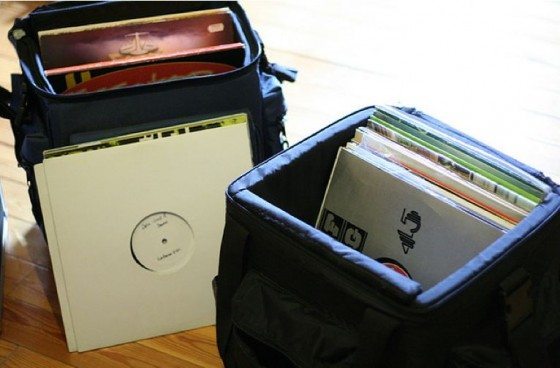 Its important to keep the “DJ Bag” fresh and up-to-date, so make sure not to spam it and to refresh it from time to time by deleting some of the tracks in there. Don´t be afraid, they will only be deleted from the folder “DJ Bag” if you do it right and are still available in the “Track Collection”. Don’t add too many tracks in there, in my case its a number between 100 – 120 for a normal set.My second folder is called “Big Ones” where I put in all the big bombs, the timeless highlights and my little secret diamonds. I only delete tracks there when I get tired of a track or when it´s no longer a biggie for me. When the time has come for a music bomb, or a track to blow the crowd away, quickly jump to this folder and you will have a long list to choose from.The third folder is called “Classics & Hits” where I add some of the well known tracks or famous classics to be prepared if the crowd asks for some tracks they know or can sing to. Usually the big Miami/Ibiza anthems of the season or old classics.The fourth folder is called “Acapellas & Tools”. The name says it all.The fifth folder is titled “Own Tools”. That’s the library of my own samples which I produced, or recorded using live loops or the loop recorder in Traktor 2.Please don’t take these methods as the best for you. They work well for me in my radio show and live shows so please pick and choose if anything seems like a good fit for you. This is not a step-by-step-introduction of how to DJ right, the love for the music and the DJs passion has to come first always. It’s just a little help when you need a hand for finding the perfect next track. Don´t follow these systems all the time as inspiration is way more important.About the author:Marcus Klay is a DJ and upcoming producer from Vienna, Austria. He is spinning House & Tech House for more than 10 years now and hosts his own radio show on Proton Radio called Positive Notes.
Its important to keep the “DJ Bag” fresh and up-to-date, so make sure not to spam it and to refresh it from time to time by deleting some of the tracks in there. Don´t be afraid, they will only be deleted from the folder “DJ Bag” if you do it right and are still available in the “Track Collection”. Don’t add too many tracks in there, in my case its a number between 100 – 120 for a normal set.My second folder is called “Big Ones” where I put in all the big bombs, the timeless highlights and my little secret diamonds. I only delete tracks there when I get tired of a track or when it´s no longer a biggie for me. When the time has come for a music bomb, or a track to blow the crowd away, quickly jump to this folder and you will have a long list to choose from.The third folder is called “Classics & Hits” where I add some of the well known tracks or famous classics to be prepared if the crowd asks for some tracks they know or can sing to. Usually the big Miami/Ibiza anthems of the season or old classics.The fourth folder is called “Acapellas & Tools”. The name says it all.The fifth folder is titled “Own Tools”. That’s the library of my own samples which I produced, or recorded using live loops or the loop recorder in Traktor 2.Please don’t take these methods as the best for you. They work well for me in my radio show and live shows so please pick and choose if anything seems like a good fit for you. This is not a step-by-step-introduction of how to DJ right, the love for the music and the DJs passion has to come first always. It’s just a little help when you need a hand for finding the perfect next track. Don´t follow these systems all the time as inspiration is way more important.About the author:Marcus Klay is a DJ and upcoming producer from Vienna, Austria. He is spinning House & Tech House for more than 10 years now and hosts his own radio show on Proton Radio called Positive Notes.
Traktor Pro 2 – Officially Announced! (Exclusive Walk Through Video)
After a well placed teaser weeks ago, NI finally gave up the goods and announced Traktor Pro 2 today with a release date of April 1st 2011. T Pro 2 is the newest succesor in the Traktor line, taking the S4 features and rolling them into Traktor Pro with a few nice extra touches. They include colored waveforms, multi channel support, and potential for up to 16 concurrent loops! Continue reading for our extensive 10 minute tour of the new software plus a breakdown of every new feature.ESSENTIAL INFO
- available in April
- $229 for the software
- $79 if you have Traktor Pro
- $129 if you have LE
- $0 if you have an S4
THE NEW FEATURES
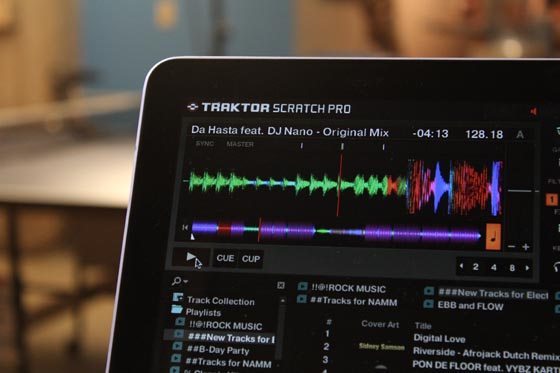
Side By Side Install

- T Pro 2 uses same analysis files as Traktor Pro 1, but does a side by side install so you can revert to T Pro 1 if needed.
New GUI
The new style is similar to the S4, and has a dark rich color palette that may be perceived by some as more professional. It’s actually starting to look more and more like the original Traktor 2 layout which was dominated by black and green tones.New Deck Sizes
 To make your screen less clutter and more feedback, NI offers a few new deck sizes that maximize or minimize space.
To make your screen less clutter and more feedback, NI offers a few new deck sizes that maximize or minimize space.- Essential Deck
- Micro Deck
Multi Colored Waveforms

 There are now 4 colored waveform options. Sadly, the one option that is not present is the Traktor 1 style waveforms. Instead you can choose from:
There are now 4 colored waveform options. Sadly, the one option that is not present is the Traktor 1 style waveforms. Instead you can choose from:- X-ray
- Infrared (Above)
- Ultraviolet
- Spectrum (Above)
Zoomable Waveforms

- The new waveforms also zoom in really tight for the most accurate cue points you can possibly imagine!
Grid-Lines
 The style of grid-lines can be customized in the Deck Preferences. There is now:
The style of grid-lines can be customized in the Deck Preferences. There is now:- light
- strong (above)
- tick
- invisible
New Platter and Scope

- The size of the platter has been increased by reducing the width of the phase meter.
LOOP RECORDER
4 Sample Decks

- S4 supports samples and loop decks on all 4 decks.
4 New Effects
• Tape Delay• Ramp Delay• Bouncer• Auto BouncerAdditional Features
- Plugging in a NI sound card will automatically change the audio from internal to the NI sound card and route the outputs so you don’t have to worry about changing settings.
- You can send multiple decks out over the same channel – 4 decks over a 2 channel sound card. (Only with the audio 6 or 10.)
- Future S4′s will ship with Traktor Pro 2 CD’s and all S4′s can also run Traktor Pro (no word on a upgrade price yet)
- Multiple decks can now use the same CD or turntable input.
- Dragging a loop from a deck into a sample slot now copies the tracks filter position
Alesis Premiers StudioDock – iPad Audio Interface
Alesis has announced the StudioDock, a new device that enables anyone with an iPad to create, produce, and perform music with virtually any pro audio gear or instruments. Now this is one of the best ideas to emerge from the NAMM show that we’ve seen.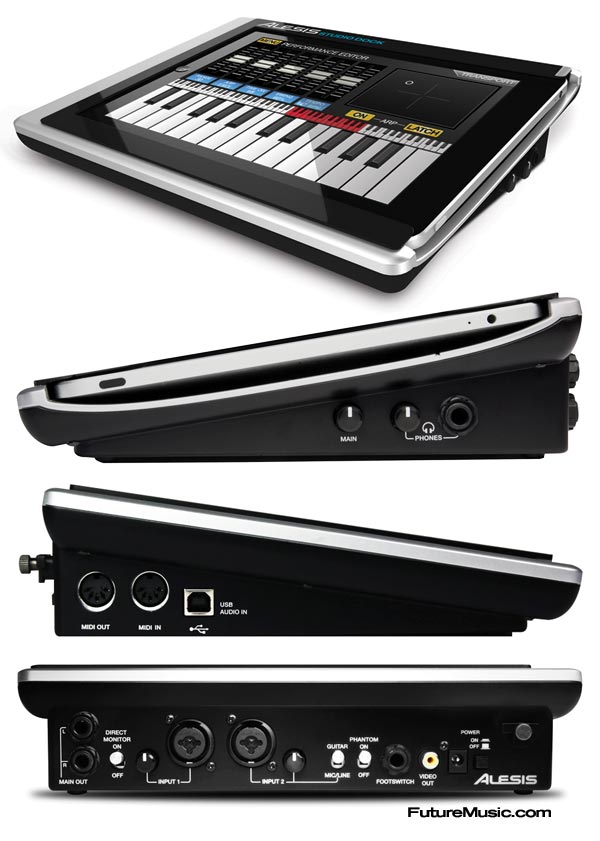 The StudioDock is a universal docking station specifically designed for the iPad, and it gives musicians, recording engineers, and music producers the connectivity they need to create and perform with iPad.With the StudioDock and an iPad, musicians and producers can record, perform, craft and create music in virtually any situation or location. Built to accommodate all current app-development standards including Core MIDI, the StudioDock is a universal device that bridges your choice of music-creation apps, instruments, and devices.Features:
The StudioDock is a universal docking station specifically designed for the iPad, and it gives musicians, recording engineers, and music producers the connectivity they need to create and perform with iPad.With the StudioDock and an iPad, musicians and producers can record, perform, craft and create music in virtually any situation or location. Built to accommodate all current app-development standards including Core MIDI, the StudioDock is a universal device that bridges your choice of music-creation apps, instruments, and devices.Features:
» First pro audio dock for iPad
» Connect microphones and instruments including guitar, studio monitors, PA speakers, headphones, and MIDI controllers
» Universal device works with virtually every audio and MIDI app in the App Store
» Core MIDI compliant
» Video output for connection to TVs and projectors
» Inputs: two combo XLR-1/4″ for use with audio gear, instruments, and computer audio
» Input channel gain controls and switchable phantom power for use with condenser microphones
» Guitar-direct switch for use with amplifier- and effects-modeling app
» Outputs: pair 1/4″ and 1/4″ headphone with separate volume controls
» Control: MIDI In, MIDI Out, USB MIDI, and assignable 1/4-inch footswitch input
I» Quick start guideThe StudioDock provides microphone and instrument users with two combination XLR and 1/4-inch inputs, each with its own gain control and switchable phantom power for condenser microphones. Guitarists and bassists will appreciate the StudioDock’s guitar-direct switch, enabling them to play, perform and record right into amplifier- and effects-modeling apps. Bands can connect outputs from their mixer and easily record their performances and rehearsals or use the StudioDock as a metronome or loop-playback device.Producers can use the StudioDock’s MIDI jacks to sequence external keyboards, samplers, drum machines and synthesizers, or perform using the StudioDock as the sound module and their favorite MIDI-compliant keyboard, drum pad or other controller. An assignable 1/4-inch footswitch input enables remote control of any app-defined function such as stop/start or record. Users can also connect the StudioDock to their Mac or PC using the USB port to send MIDI back and forth for creative, new applications of the iPad and computer used in tandem.Users can connect the StudioDock’s stereo pair of 1/4-inch main outputs to studio monitors for critical listening, or to PA systems for use in performance settings. They can monitor on headphones, and independently control the levels of the two outputs, each on its own knob. The StudioDock’s direct-monitor switch enables users to toggle between the incoming and playback signal on their headphones. Rounding out the StudioDock’s output section is a composite video connector, enabling users to employ the StudioDock as a source for video projection behind bands on stage, or for connection to most televisions and computer monitors.The StudioDock completely houses the iPad on the bottom and three side surfaces. It also encases the iPad’s screen in a protective bezel on three of its four edges, further shielding the mobile computing device from the potential for damage in punishing environments.The applications of the iPad for music creation, production, and performance are limited only by your creativity. As an imaginative, cutting-edge music maker, the StudioDock empowers you to seamlessly connect the world of pro audio gear and instruments to the iPad and the massive collection of apps.No pricing or availability has been announced. More information on the Alesis StudioDock.
Korg Announces Kaoss Quad Processor
Korg has entered a new model into the Kaoss Pad lineup dubbed the Quad.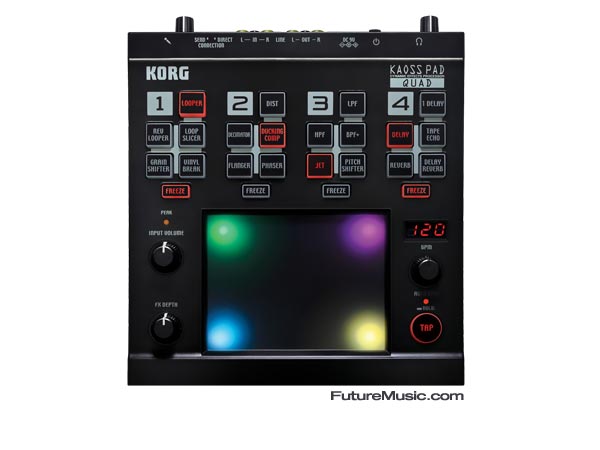 Features:
Features:
» Color LED touchpad illuminations move in sync with your performance
» Control multiple effects in realtime using the intuitive Kaoss X-Y touchpad
» Create your own Kaoss combinations and use up to four effects at once
» Choose one of five effects from each of four effect groups; a total of 1,295 combinations!
» Freeze button holds the effect settings after you release your finger, for dazzling hands-free use
» Versatile and highly playable effects control, delivering unimaginable expression
» New Looper effects – Forward, Reverse and Slice – add new audio intensity
» Mix it up with new DJ emulation Vinyl Break and Ducking Compressor effects
» Auto BPM engine detection and Tap Tempo functions keep your Kaoss locked to the beat (but no MIDI in… —Ed.)As suggested by the name “Quad”, this new Kaoss Pad lets you use up to four effects simultaneously. These effects can be sync’d to the beat of your music, via audio beat detection and not MIDI.More information on the Korg Kaoss Quad
M-Audio Unleashes Venom Virtual Analog Synth & Editor
Although M-Audio’s Venom has been in development for two years, Avid was able to surprise quite a few people when they launched this very affordable virtual analog synthesizer at this year’s NAMM show.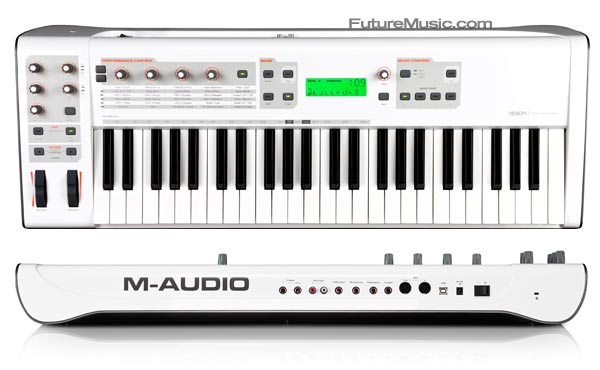 The Venom 49-key synthesizer combines the character of classic analog synths with modern digital processing to deliver an aggressive, infectious new sound. Even though you can dial up nice atmospheric pad with the Venom, the synth has a more Nord-like brittle edge to its sound, which Avid describes as “angry and downright nasty.” It’s hard to determine where this will sit in today’s music, but there will be quite a few budding and mature synthesists who will have no problem plunking down around $500 (street) for this new entry.Features:
The Venom 49-key synthesizer combines the character of classic analog synths with modern digital processing to deliver an aggressive, infectious new sound. Even though you can dial up nice atmospheric pad with the Venom, the synth has a more Nord-like brittle edge to its sound, which Avid describes as “angry and downright nasty.” It’s hard to determine where this will sit in today’s music, but there will be quite a few budding and mature synthesists who will have no problem plunking down around $500 (street) for this new entry.Features:
» 49-key, full-size, synth-action keyboard
» 12-voice polyphony, each voice including:
— 3 oscillators with 41 waveforms and 53 drum sounds sampled from vintage analog synths, FM digital synths, and drum machines
— pulse-width modulation, sync, FM, and ring modulation
— resonant multimode filter with tube saturation limiting
— 12 dB/octave (2-pole) low pass
— 12 dB/octave (2-pole) band pass
— 12 dB/octave (2-pole) high pass
— 24 dB/octave (4-pole) low pass
— 24 dB/octave (4-pole) band pass
— 24 dB/octave (4-pole) high pass
— 3 LFOs with selectable sample-and-hold
— 3 AHDSR envelopes
— 16 modulation routes
» 4-part multitimbral operation with independent MIDI-syncable phrase sequencers
» 512 onboard Single patches
» 256 onboard Multi (layered) patches
» 2 global bus effects: Reverb, Delay, Chorus, Flanger, Phaser
» 1 insert effect per multitimbral part (4 total): Compression, EQ, Distortion, Bit Reduction, Decimation
» classic arpeggiator with up, down, and alternating patterns
» tap-tempo and manual BPM control from top panel
» built-in USB 2.0 audio/MIDI interface (USB 1.1 backward compatible)
— 2 x 2 24-bit, 44.1 kHz operation
— mic, instrument, and stereo line level inputs route to DAW
— synth sounds route to DAW
— DAW audio output mixes into main outputs
— stereo main audio outputs (1/4″ TS)
— stereo headphone output (1/4″ TRS)
— master volume knob; instrument and mic gain knobs
— MIDI In and MIDI Out (5-pin DIN)
» large custom LCD
» 4 rotary encoders and 1 button for performance control and editing
» dual-function octave up/down and transpose controls
» assignable pitch bend and modulation wheels
» sustain (1/4″ TS) and expression (1/4″ TRS) pedal inputsVenom comes fueled with 512 Single patches and 256 Multi-sound (layered) patches. You’ll also find a classic arpeggiator for added animation. Tweak the sounds using the intuitive top-panel performance controls or dig in deep using the Vyzex software editor (see below).With a synth engine, Venom merges analog flavor with digital power, providing a unique sonic signature that stands apart from the glossy sheen of other virtual analog synths. You get 41 oscillator waves and 53 drum sounds sampled from vintage keyboards of the past four decades – complete with DSP-induced oscillator drift for a retro vibe. Each of the 12 simultaneous virtual analog voices features three oscillators, giving you tons of flexibility for octaves, intervals, and fat, detuned offsets. Venom even offers FM, sync, and dynamic wave-shaping on all waveforms for unique hybrid sounds.For even more sound-shaping possibilities, the Venom resonant multimode filter features 12dB/octave (2-pole) and 24dB/octave (4-pole) operation, with tube saturation limiting on the input for that classic overdriven sound. Each voice also sports three LFOs with selectable sample-and-hold to create evolving, rhythmic sounds—plus three AHDSR envelopes for total control of your unique sound.You can even use Venom as an audio interface with Pro Tools M-Powered (Requires Pro Tools M-Powered 8 or higher) and other music software—forming a powerful production machine to take your music in dangerous new directions.A nice compliment to the Venom is the included Vyzex Venom software editor. This is many users will really get creative with the synth and we have a feeling Avid will be upgrading Vyzex as Venoms fly off the shelves.Vyzex Features:
» arrange sounds into banks, rename patches, and save backups
» patch collider feature mashes up multiple patches to create new hybrid sounds
» 16-cell modulation matrix offers comprehensive routing configurationsM-Audio’s Venom costs only $599 and is available now. More information on M-Audio Venom.
New Traktor and Serato Controllers from Pioneer (Updated)
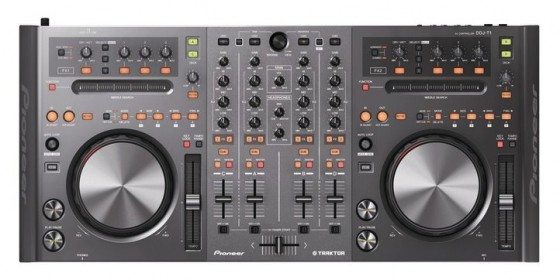 Although widely rumored, its looking official, Pioneer is finally jumping on board the controller craze. They have been working on 2 models, 1 for Traktor (DDJ-T1) and one for Serato (DDJ-S1). Both are basically identical in layout but equipped with specific features for each software. We have known this was coming for a while but Pioneer did an amazing job of keeping it from leaking, especially considering they showed it to everyone under the sun. Read on for more speculation and a new record low volume of factual data!
Although widely rumored, its looking official, Pioneer is finally jumping on board the controller craze. They have been working on 2 models, 1 for Traktor (DDJ-T1) and one for Serato (DDJ-S1). Both are basically identical in layout but equipped with specific features for each software. We have known this was coming for a while but Pioneer did an amazing job of keeping it from leaking, especially considering they showed it to everyone under the sun. Read on for more speculation and a new record low volume of factual data!DDJ-T1 CONTROLLER
The Pioneer DDJ-T1 controller is clearly an amalgamation of their CDJ-200 line into the controller world. Throw in a 4 channel mixer and depending on the feature set/software bundle- you may have the first real competition for the S4. Considering the new CDJ-200’s run around $300 each and a decent 4 channel mixer is at least $400, this should represent a really good value for new djs looking to maintain a Pioneer work flow in the digital domain.The real question here is whether or not Pioneer struck a deal with NI to include a new Traktor Pro software with S4 features (more info tomorrow on that). If they did, then that means there will be real competition in the market place for that platform. If not, and NI holds on to the S4 feature set for themselves, then I doubt the controller will make it much farther.NOTABLE DETAILS- the knobs and buttons look noticeably plastic
- based on the size of the jog wheels relative to the transport buttons, its full CDj-20 sized, which means a wide controller
- needle drop touch strip
- auto loop encoder matches the s4 (look for this to become standard)
- there are mic and headphone jacks so a built-in sound card is evident
- the top photo is probably a very good 3 render, while the photo above looks like an early stage prototype.
DDJ-S1 CONTROLLER
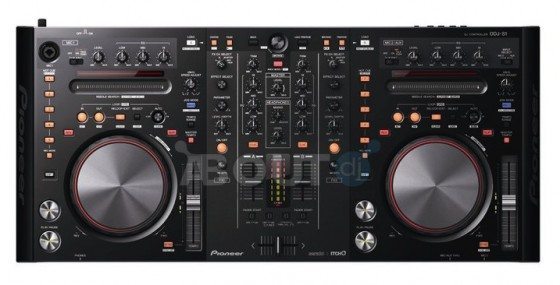 This one has the potential to be really interesting because its rumored to be working with Serato Scratch, which means it might be the very first all in one controller/sound card combo fully supported by Scratch (transport control without requiring the SL1/2/3boxes). Most mobile djs are stuck using Serato Scratch in the club and then Itch in the mobile territory. They really all just want a mobile controller for Serato that does NOT require a SL box. If Pioneer manages to be the first to create that reality, they will kill it in sales. If not, its still looking like a great alternative to the popular vci-300.NOTABLE DETAILS
This one has the potential to be really interesting because its rumored to be working with Serato Scratch, which means it might be the very first all in one controller/sound card combo fully supported by Scratch (transport control without requiring the SL1/2/3boxes). Most mobile djs are stuck using Serato Scratch in the club and then Itch in the mobile territory. They really all just want a mobile controller for Serato that does NOT require a SL box. If Pioneer manages to be the first to create that reality, they will kill it in sales. If not, its still looking like a great alternative to the popular vci-300.NOTABLE DETAILS- 2 channel mixer (itch supports 4 decks but Serato only 2 without the right hardware)
- needle drop touch strip has LED feedback of position
- overall look and work flow is a much closer match to traditional CDJ equipment than the DDJ-T1
- VU meters here but not on the DDJ-T1
ENTREVISTA CON K.E.E.N.E. DESDE PANAMA
ENTREVISTA CON DORIAN CHAVEZ DESDE CHILE

Sorting Your DJ Music Library: The Klay System
These days, it seems like every DJ is using a laptop but they feel like a double edged sword, providing opportunity and creating new obstacles to creativity at the same time. Have you ever been stuck at a critical moment thinking, “Sh&%- what was the name of that song?! – It would be perfect!” Only to watch the countdown wind down to zero and then have no choice but to drop a dancefloor killer. In this article I will attempt to provide a few suggestions for music tagging that will help organize your giant collection into something more navigable.This article concentrates on the NI Traktor software I use, but the idea can be used for other software as well. We advocate using the tools that fit your needs best, not necessarily the specific brands covered. The first thing I do when purchasing music is to edit the MP3 tags and fill in the critical details for Artist, Title, Key, Genre, Import Date, Comments and finally Rating. Today, we are going to focus on the last three.RATING
For many of you the rating may seem totally useless. Where is the sense in rating your tracks from one star to five when five stars means it´s a great track and one star means that it´s bad? Why would you even keep a bad track you don´t like on your hard drive? personally I don’t rate the quality of the tracks, but the FEEL. More specifically: The vibe it would create in my sets or when it might be played. Think about these basic ideas:- 1 star tracks: These are tracks which you would play in the opening period of your sets, the hours when the club just opened or which create such a feeling for you. The beginning. The deepest or “softest” sounds you own.
- 3 star tracks: These tracks are best used in the main hours of your set. When you play these tracks, you’re right in the middle of your set and keep the vibe going. Or again they create such a vibe for you.
- 5 star tracks: Right here you have the peak time tracks, the banging stuff, the closing tracks, the hardest stuff on your hard drive,… You get the idea.
You may be wondering, what about the 2 and 4 star ratings? Well, you are welcome to use shades of grey (not every track can be a 5 star banger) but its helpful to focus on 3 main groupings.This doesn’t mean that you play 1 star track after 1 star track, then switch to a 2 star track and go on to a 3 star track. Its neither a mathematical scheme, nor a “dummy list” for untalented DJs. This is a handy reference for remembering important details about songs in a large library. The biggest advantage is to be able to sort your library by rating.COMMENTS
The next important thing for me to focus on is the “Comments” tag. Fill in any information you think of when listening to the track, Ideally Something that will trigger a memory of the sound. Without cover art, its hard to get a feeling for a song with just text so the description should be just that – descriptive! It can be the lyrics of the vocals, a personalized description of the sound (deep techy latin groover), a name of a festival where I heard it first, or another track it would fit perfectly with.That results in comments like :- “Vocal and groovy”, “Latin”, “Percussive”, “Circo Loco”, “6.15 in the morning”, “Perfect for acapellas”, “Miami bomb”, “Deep & atmospherique”, “Robot vocals”, “Tool”.
These types of comments provide a little reminder of the track`s spirit. It also helps quickly find a vocal track to play after a period of groovy and instrumental tracks to keep the vibe fresh and balanced.Keeping the “Ratings” and “Comments” in mind when you DJ with somebody else, you can theoretically even share your library with him/her as they can see the rating, read the comments and possibly find a suitable track until you return from the bathroom. Remember that I said THEORETICALLY. Its always best, when you know the tracks you´re playing.IMPORT DATE
I would never leave out this tag in the sortable column because it is the the fastest way to find the freshest tracks. Just click on it and your tree gets sorted by the date you added the track to the collection. So in any folder with one click you have the latest additions and can easily find that fresh new record. For the CD-DJs this is like the latest sleeve of your CD case. It also helps me to refresh my playlist folders as I normally delete some of the oldest additions to clean it up a bit.PLAYLIST FOLDERS
A good thing about the digital DJ softwares is the endless supply of “crates” or “folders”. In Traktor you also have the possibility to make them favorites and place them above your browser tree for easy access (crates). Now how can you categorize these folders?The first folder I created is called “DJ Bag”. Thinking of back in the days when I started to DJ with my vinyls, the “Track Collection” folder is like the whole vinyl collection you have at home and the “DJ Bag” folder is the record bag you pack before a gig and where you put selected tracks that would fit best for the set. Its important to keep the “DJ Bag” fresh and up-to-date, so make sure not to spam it and to refresh it from time to time by deleting some of the tracks in there. Don´t be afraid, they will only be deleted from the folder “DJ Bag” if you do it right and are still available in the “Track Collection”. Don’t add too many tracks in there, in my case its a number between 100 – 120 for a normal set.My second folder is called “Big Ones” where I put in all the big bombs, the timeless highlights and my little secret diamonds. I only delete tracks there when I get tired of a track or when it´s no longer a biggie for me. When the time has come for a music bomb, or a track to blow the crowd away, quickly jump to this folder and you will have a long list to choose from.The third folder is called “Classics & Hits” where I add some of the well known tracks or famous classics to be prepared if the crowd asks for some tracks they know or can sing to. Usually the big Miami/Ibiza anthems of the season or old classics.The fourth folder is called “Acapellas & Tools”. The name says it all.The fifth folder is titled “Own Tools”. That’s the library of my own samples which I produced, or recorded using live loops or the loop recorder in Traktor 2.Please don’t take these methods as the best for you. They work well for me in my radio show and live shows so please pick and choose if anything seems like a good fit for you. This is not a step-by-step-introduction of how to DJ right, the love for the music and the DJs passion has to come first always. It’s just a little help when you need a hand for finding the perfect next track. Don´t follow these systems all the time as inspiration is way more important.About the author:Marcus Klay is a DJ and upcoming producer from Vienna, Austria. He is spinning House & Tech House for more than 10 years now and hosts his own radio show on Proton Radio called Positive Notes.
Its important to keep the “DJ Bag” fresh and up-to-date, so make sure not to spam it and to refresh it from time to time by deleting some of the tracks in there. Don´t be afraid, they will only be deleted from the folder “DJ Bag” if you do it right and are still available in the “Track Collection”. Don’t add too many tracks in there, in my case its a number between 100 – 120 for a normal set.My second folder is called “Big Ones” where I put in all the big bombs, the timeless highlights and my little secret diamonds. I only delete tracks there when I get tired of a track or when it´s no longer a biggie for me. When the time has come for a music bomb, or a track to blow the crowd away, quickly jump to this folder and you will have a long list to choose from.The third folder is called “Classics & Hits” where I add some of the well known tracks or famous classics to be prepared if the crowd asks for some tracks they know or can sing to. Usually the big Miami/Ibiza anthems of the season or old classics.The fourth folder is called “Acapellas & Tools”. The name says it all.The fifth folder is titled “Own Tools”. That’s the library of my own samples which I produced, or recorded using live loops or the loop recorder in Traktor 2.Please don’t take these methods as the best for you. They work well for me in my radio show and live shows so please pick and choose if anything seems like a good fit for you. This is not a step-by-step-introduction of how to DJ right, the love for the music and the DJs passion has to come first always. It’s just a little help when you need a hand for finding the perfect next track. Don´t follow these systems all the time as inspiration is way more important.About the author:Marcus Klay is a DJ and upcoming producer from Vienna, Austria. He is spinning House & Tech House for more than 10 years now and hosts his own radio show on Proton Radio called Positive Notes.
Traktor Pro 2 – Officially Announced! (Exclusive Walk Through Video)
After a well placed teaser weeks ago, NI finally gave up the goods and announced Traktor Pro 2 today with a release date of April 1st 2011. T Pro 2 is the newest succesor in the Traktor line, taking the S4 features and rolling them into Traktor Pro with a few nice extra touches. They include colored waveforms, multi channel support, and potential for up to 16 concurrent loops! Continue reading for our extensive 10 minute tour of the new software plus a breakdown of every new feature.ESSENTIAL INFO
- available in April
- $229 for the software
- $79 if you have Traktor Pro
- $129 if you have LE
- $0 if you have an S4
THE NEW FEATURES

Side By Side Install

- T Pro 2 uses same analysis files as Traktor Pro 1, but does a side by side install so you can revert to T Pro 1 if needed.
New GUI
The new style is similar to the S4, and has a dark rich color palette that may be perceived by some as more professional. It’s actually starting to look more and more like the original Traktor 2 layout which was dominated by black and green tones.New Deck Sizes
 To make your screen less clutter and more feedback, NI offers a few new deck sizes that maximize or minimize space.
To make your screen less clutter and more feedback, NI offers a few new deck sizes that maximize or minimize space.- Essential Deck
- Micro Deck
Multi Colored Waveforms

 There are now 4 colored waveform options. Sadly, the one option that is not present is the Traktor 1 style waveforms. Instead you can choose from:
There are now 4 colored waveform options. Sadly, the one option that is not present is the Traktor 1 style waveforms. Instead you can choose from:- X-ray
- Infrared (Above)
- Ultraviolet
- Spectrum (Above)
Zoomable Waveforms

- The new waveforms also zoom in really tight for the most accurate cue points you can possibly imagine!
Grid-Lines
 The style of grid-lines can be customized in the Deck Preferences. There is now:
The style of grid-lines can be customized in the Deck Preferences. There is now:- light
- strong (above)
- tick
- invisible
New Platter and Scope

- The size of the platter has been increased by reducing the width of the phase meter.
LOOP RECORDER
4 Sample Decks

- S4 supports samples and loop decks on all 4 decks.
4 New Effects
• Tape Delay• Ramp Delay• Bouncer• Auto BouncerAdditional Features
- Plugging in a NI sound card will automatically change the audio from internal to the NI sound card and route the outputs so you don’t have to worry about changing settings.
- You can send multiple decks out over the same channel – 4 decks over a 2 channel sound card. (Only with the audio 6 or 10.)
- Future S4′s will ship with Traktor Pro 2 CD’s and all S4′s can also run Traktor Pro (no word on a upgrade price yet)
- Multiple decks can now use the same CD or turntable input.
- Dragging a loop from a deck into a sample slot now copies the tracks filter position
Alesis Premiers StudioDock – iPad Audio Interface
Alesis has announced the StudioDock, a new device that enables anyone with an iPad to create, produce, and perform music with virtually any pro audio gear or instruments. Now this is one of the best ideas to emerge from the NAMM show that we’ve seen. The StudioDock is a universal docking station specifically designed for the iPad, and it gives musicians, recording engineers, and music producers the connectivity they need to create and perform with iPad.With the StudioDock and an iPad, musicians and producers can record, perform, craft and create music in virtually any situation or location. Built to accommodate all current app-development standards including Core MIDI, the StudioDock is a universal device that bridges your choice of music-creation apps, instruments, and devices.Features:
The StudioDock is a universal docking station specifically designed for the iPad, and it gives musicians, recording engineers, and music producers the connectivity they need to create and perform with iPad.With the StudioDock and an iPad, musicians and producers can record, perform, craft and create music in virtually any situation or location. Built to accommodate all current app-development standards including Core MIDI, the StudioDock is a universal device that bridges your choice of music-creation apps, instruments, and devices.Features:
» First pro audio dock for iPad
» Connect microphones and instruments including guitar, studio monitors, PA speakers, headphones, and MIDI controllers
» Universal device works with virtually every audio and MIDI app in the App Store
» Core MIDI compliant
» Video output for connection to TVs and projectors
» Inputs: two combo XLR-1/4″ for use with audio gear, instruments, and computer audio
» Input channel gain controls and switchable phantom power for use with condenser microphones
» Guitar-direct switch for use with amplifier- and effects-modeling app
» Outputs: pair 1/4″ and 1/4″ headphone with separate volume controls
» Control: MIDI In, MIDI Out, USB MIDI, and assignable 1/4-inch footswitch input
I» Quick start guideThe StudioDock provides microphone and instrument users with two combination XLR and 1/4-inch inputs, each with its own gain control and switchable phantom power for condenser microphones. Guitarists and bassists will appreciate the StudioDock’s guitar-direct switch, enabling them to play, perform and record right into amplifier- and effects-modeling apps. Bands can connect outputs from their mixer and easily record their performances and rehearsals or use the StudioDock as a metronome or loop-playback device.Producers can use the StudioDock’s MIDI jacks to sequence external keyboards, samplers, drum machines and synthesizers, or perform using the StudioDock as the sound module and their favorite MIDI-compliant keyboard, drum pad or other controller. An assignable 1/4-inch footswitch input enables remote control of any app-defined function such as stop/start or record. Users can also connect the StudioDock to their Mac or PC using the USB port to send MIDI back and forth for creative, new applications of the iPad and computer used in tandem.Users can connect the StudioDock’s stereo pair of 1/4-inch main outputs to studio monitors for critical listening, or to PA systems for use in performance settings. They can monitor on headphones, and independently control the levels of the two outputs, each on its own knob. The StudioDock’s direct-monitor switch enables users to toggle between the incoming and playback signal on their headphones. Rounding out the StudioDock’s output section is a composite video connector, enabling users to employ the StudioDock as a source for video projection behind bands on stage, or for connection to most televisions and computer monitors.The StudioDock completely houses the iPad on the bottom and three side surfaces. It also encases the iPad’s screen in a protective bezel on three of its four edges, further shielding the mobile computing device from the potential for damage in punishing environments.The applications of the iPad for music creation, production, and performance are limited only by your creativity. As an imaginative, cutting-edge music maker, the StudioDock empowers you to seamlessly connect the world of pro audio gear and instruments to the iPad and the massive collection of apps.No pricing or availability has been announced. More information on the Alesis StudioDock.
Korg Announces Kaoss Quad Processor
Korg has entered a new model into the Kaoss Pad lineup dubbed the Quad. Features:
Features:
» Color LED touchpad illuminations move in sync with your performance
» Control multiple effects in realtime using the intuitive Kaoss X-Y touchpad
» Create your own Kaoss combinations and use up to four effects at once
» Choose one of five effects from each of four effect groups; a total of 1,295 combinations!
» Freeze button holds the effect settings after you release your finger, for dazzling hands-free use
» Versatile and highly playable effects control, delivering unimaginable expression
» New Looper effects – Forward, Reverse and Slice – add new audio intensity
» Mix it up with new DJ emulation Vinyl Break and Ducking Compressor effects
» Auto BPM engine detection and Tap Tempo functions keep your Kaoss locked to the beat (but no MIDI in… —Ed.)As suggested by the name “Quad”, this new Kaoss Pad lets you use up to four effects simultaneously. These effects can be sync’d to the beat of your music, via audio beat detection and not MIDI.More information on the Korg Kaoss Quad
M-Audio Unleashes Venom Virtual Analog Synth & Editor
Although M-Audio’s Venom has been in development for two years, Avid was able to surprise quite a few people when they launched this very affordable virtual analog synthesizer at this year’s NAMM show. The Venom 49-key synthesizer combines the character of classic analog synths with modern digital processing to deliver an aggressive, infectious new sound. Even though you can dial up nice atmospheric pad with the Venom, the synth has a more Nord-like brittle edge to its sound, which Avid describes as “angry and downright nasty.” It’s hard to determine where this will sit in today’s music, but there will be quite a few budding and mature synthesists who will have no problem plunking down around $500 (street) for this new entry.Features:
The Venom 49-key synthesizer combines the character of classic analog synths with modern digital processing to deliver an aggressive, infectious new sound. Even though you can dial up nice atmospheric pad with the Venom, the synth has a more Nord-like brittle edge to its sound, which Avid describes as “angry and downright nasty.” It’s hard to determine where this will sit in today’s music, but there will be quite a few budding and mature synthesists who will have no problem plunking down around $500 (street) for this new entry.Features:
» 49-key, full-size, synth-action keyboard
» 12-voice polyphony, each voice including:
— 3 oscillators with 41 waveforms and 53 drum sounds sampled from vintage analog synths, FM digital synths, and drum machines
— pulse-width modulation, sync, FM, and ring modulation
— resonant multimode filter with tube saturation limiting
— 12 dB/octave (2-pole) low pass
— 12 dB/octave (2-pole) band pass
— 12 dB/octave (2-pole) high pass
— 24 dB/octave (4-pole) low pass
— 24 dB/octave (4-pole) band pass
— 24 dB/octave (4-pole) high pass
— 3 LFOs with selectable sample-and-hold
— 3 AHDSR envelopes
— 16 modulation routes
» 4-part multitimbral operation with independent MIDI-syncable phrase sequencers
» 512 onboard Single patches
» 256 onboard Multi (layered) patches
» 2 global bus effects: Reverb, Delay, Chorus, Flanger, Phaser
» 1 insert effect per multitimbral part (4 total): Compression, EQ, Distortion, Bit Reduction, Decimation
» classic arpeggiator with up, down, and alternating patterns
» tap-tempo and manual BPM control from top panel
» built-in USB 2.0 audio/MIDI interface (USB 1.1 backward compatible)
— 2 x 2 24-bit, 44.1 kHz operation
— mic, instrument, and stereo line level inputs route to DAW
— synth sounds route to DAW
— DAW audio output mixes into main outputs
— stereo main audio outputs (1/4″ TS)
— stereo headphone output (1/4″ TRS)
— master volume knob; instrument and mic gain knobs
— MIDI In and MIDI Out (5-pin DIN)
» large custom LCD
» 4 rotary encoders and 1 button for performance control and editing
» dual-function octave up/down and transpose controls
» assignable pitch bend and modulation wheels
» sustain (1/4″ TS) and expression (1/4″ TRS) pedal inputsVenom comes fueled with 512 Single patches and 256 Multi-sound (layered) patches. You’ll also find a classic arpeggiator for added animation. Tweak the sounds using the intuitive top-panel performance controls or dig in deep using the Vyzex software editor (see below).With a synth engine, Venom merges analog flavor with digital power, providing a unique sonic signature that stands apart from the glossy sheen of other virtual analog synths. You get 41 oscillator waves and 53 drum sounds sampled from vintage keyboards of the past four decades – complete with DSP-induced oscillator drift for a retro vibe. Each of the 12 simultaneous virtual analog voices features three oscillators, giving you tons of flexibility for octaves, intervals, and fat, detuned offsets. Venom even offers FM, sync, and dynamic wave-shaping on all waveforms for unique hybrid sounds.For even more sound-shaping possibilities, the Venom resonant multimode filter features 12dB/octave (2-pole) and 24dB/octave (4-pole) operation, with tube saturation limiting on the input for that classic overdriven sound. Each voice also sports three LFOs with selectable sample-and-hold to create evolving, rhythmic sounds—plus three AHDSR envelopes for total control of your unique sound.You can even use Venom as an audio interface with Pro Tools M-Powered (Requires Pro Tools M-Powered 8 or higher) and other music software—forming a powerful production machine to take your music in dangerous new directions.A nice compliment to the Venom is the included Vyzex Venom software editor. This is many users will really get creative with the synth and we have a feeling Avid will be upgrading Vyzex as Venoms fly off the shelves.Vyzex Features:
» arrange sounds into banks, rename patches, and save backups
» patch collider feature mashes up multiple patches to create new hybrid sounds
» 16-cell modulation matrix offers comprehensive routing configurationsM-Audio’s Venom costs only $599 and is available now. More information on M-Audio Venom.
ENTREVISTA CON K.E.E.N.E. DESDE PANAMA
ENTREVISTA CON DORIAN CHAVEZ DESDE CHILE

Sorting Your DJ Music Library: The Klay System
These days, it seems like every DJ is using a laptop but they feel like a double edged sword, providing opportunity and creating new obstacles to creativity at the same time. Have you ever been stuck at a critical moment thinking, “Sh&%- what was the name of that song?! – It would be perfect!” Only to watch the countdown wind down to zero and then have no choice but to drop a dancefloor killer. In this article I will attempt to provide a few suggestions for music tagging that will help organize your giant collection into something more navigable.This article concentrates on the NI Traktor software I use, but the idea can be used for other software as well. We advocate using the tools that fit your needs best, not necessarily the specific brands covered. The first thing I do when purchasing music is to edit the MP3 tags and fill in the critical details for Artist, Title, Key, Genre, Import Date, Comments and finally Rating. Today, we are going to focus on the last three.RATING
For many of you the rating may seem totally useless. Where is the sense in rating your tracks from one star to five when five stars means it´s a great track and one star means that it´s bad? Why would you even keep a bad track you don´t like on your hard drive? personally I don’t rate the quality of the tracks, but the FEEL. More specifically: The vibe it would create in my sets or when it might be played. Think about these basic ideas:- 1 star tracks: These are tracks which you would play in the opening period of your sets, the hours when the club just opened or which create such a feeling for you. The beginning. The deepest or “softest” sounds you own.
- 3 star tracks: These tracks are best used in the main hours of your set. When you play these tracks, you’re right in the middle of your set and keep the vibe going. Or again they create such a vibe for you.
- 5 star tracks: Right here you have the peak time tracks, the banging stuff, the closing tracks, the hardest stuff on your hard drive,… You get the idea.
You may be wondering, what about the 2 and 4 star ratings? Well, you are welcome to use shades of grey (not every track can be a 5 star banger) but its helpful to focus on 3 main groupings.This doesn’t mean that you play 1 star track after 1 star track, then switch to a 2 star track and go on to a 3 star track. Its neither a mathematical scheme, nor a “dummy list” for untalented DJs. This is a handy reference for remembering important details about songs in a large library. The biggest advantage is to be able to sort your library by rating.COMMENTS
The next important thing for me to focus on is the “Comments” tag. Fill in any information you think of when listening to the track, Ideally Something that will trigger a memory of the sound. Without cover art, its hard to get a feeling for a song with just text so the description should be just that – descriptive! It can be the lyrics of the vocals, a personalized description of the sound (deep techy latin groover), a name of a festival where I heard it first, or another track it would fit perfectly with.That results in comments like :- “Vocal and groovy”, “Latin”, “Percussive”, “Circo Loco”, “6.15 in the morning”, “Perfect for acapellas”, “Miami bomb”, “Deep & atmospherique”, “Robot vocals”, “Tool”.
These types of comments provide a little reminder of the track`s spirit. It also helps quickly find a vocal track to play after a period of groovy and instrumental tracks to keep the vibe fresh and balanced.Keeping the “Ratings” and “Comments” in mind when you DJ with somebody else, you can theoretically even share your library with him/her as they can see the rating, read the comments and possibly find a suitable track until you return from the bathroom. Remember that I said THEORETICALLY. Its always best, when you know the tracks you´re playing.IMPORT DATE
I would never leave out this tag in the sortable column because it is the the fastest way to find the freshest tracks. Just click on it and your tree gets sorted by the date you added the track to the collection. So in any folder with one click you have the latest additions and can easily find that fresh new record. For the CD-DJs this is like the latest sleeve of your CD case. It also helps me to refresh my playlist folders as I normally delete some of the oldest additions to clean it up a bit.PLAYLIST FOLDERS
A good thing about the digital DJ softwares is the endless supply of “crates” or “folders”. In Traktor you also have the possibility to make them favorites and place them above your browser tree for easy access (crates). Now how can you categorize these folders?The first folder I created is called “DJ Bag”. Thinking of back in the days when I started to DJ with my vinyls, the “Track Collection” folder is like the whole vinyl collection you have at home and the “DJ Bag” folder is the record bag you pack before a gig and where you put selected tracks that would fit best for the set. Its important to keep the “DJ Bag” fresh and up-to-date, so make sure not to spam it and to refresh it from time to time by deleting some of the tracks in there. Don´t be afraid, they will only be deleted from the folder “DJ Bag” if you do it right and are still available in the “Track Collection”. Don’t add too many tracks in there, in my case its a number between 100 – 120 for a normal set.My second folder is called “Big Ones” where I put in all the big bombs, the timeless highlights and my little secret diamonds. I only delete tracks there when I get tired of a track or when it´s no longer a biggie for me. When the time has come for a music bomb, or a track to blow the crowd away, quickly jump to this folder and you will have a long list to choose from.The third folder is called “Classics & Hits” where I add some of the well known tracks or famous classics to be prepared if the crowd asks for some tracks they know or can sing to. Usually the big Miami/Ibiza anthems of the season or old classics.The fourth folder is called “Acapellas & Tools”. The name says it all.The fifth folder is titled “Own Tools”. That’s the library of my own samples which I produced, or recorded using live loops or the loop recorder in Traktor 2.Please don’t take these methods as the best for you. They work well for me in my radio show and live shows so please pick and choose if anything seems like a good fit for you. This is not a step-by-step-introduction of how to DJ right, the love for the music and the DJs passion has to come first always. It’s just a little help when you need a hand for finding the perfect next track. Don´t follow these systems all the time as inspiration is way more important.About the author:Marcus Klay is a DJ and upcoming producer from Vienna, Austria. He is spinning House & Tech House for more than 10 years now and hosts his own radio show on Proton Radio called Positive Notes.
Its important to keep the “DJ Bag” fresh and up-to-date, so make sure not to spam it and to refresh it from time to time by deleting some of the tracks in there. Don´t be afraid, they will only be deleted from the folder “DJ Bag” if you do it right and are still available in the “Track Collection”. Don’t add too many tracks in there, in my case its a number between 100 – 120 for a normal set.My second folder is called “Big Ones” where I put in all the big bombs, the timeless highlights and my little secret diamonds. I only delete tracks there when I get tired of a track or when it´s no longer a biggie for me. When the time has come for a music bomb, or a track to blow the crowd away, quickly jump to this folder and you will have a long list to choose from.The third folder is called “Classics & Hits” where I add some of the well known tracks or famous classics to be prepared if the crowd asks for some tracks they know or can sing to. Usually the big Miami/Ibiza anthems of the season or old classics.The fourth folder is called “Acapellas & Tools”. The name says it all.The fifth folder is titled “Own Tools”. That’s the library of my own samples which I produced, or recorded using live loops or the loop recorder in Traktor 2.Please don’t take these methods as the best for you. They work well for me in my radio show and live shows so please pick and choose if anything seems like a good fit for you. This is not a step-by-step-introduction of how to DJ right, the love for the music and the DJs passion has to come first always. It’s just a little help when you need a hand for finding the perfect next track. Don´t follow these systems all the time as inspiration is way more important.About the author:Marcus Klay is a DJ and upcoming producer from Vienna, Austria. He is spinning House & Tech House for more than 10 years now and hosts his own radio show on Proton Radio called Positive Notes.
Traktor Pro 2 – Officially Announced! (Exclusive Walk Through Video)
After a well placed teaser weeks ago, NI finally gave up the goods and announced Traktor Pro 2 today with a release date of April 1st 2011. T Pro 2 is the newest succesor in the Traktor line, taking the S4 features and rolling them into Traktor Pro with a few nice extra touches. They include colored waveforms, multi channel support, and potential for up to 16 concurrent loops! Continue reading for our extensive 10 minute tour of the new software plus a breakdown of every new feature.ESSENTIAL INFO
- available in April
- $229 for the software
- $79 if you have Traktor Pro
- $129 if you have LE
- $0 if you have an S4
THE NEW FEATURES

Side By Side Install

- T Pro 2 uses same analysis files as Traktor Pro 1, but does a side by side install so you can revert to T Pro 1 if needed.
New GUI
The new style is similar to the S4, and has a dark rich color palette that may be perceived by some as more professional. It’s actually starting to look more and more like the original Traktor 2 layout which was dominated by black and green tones.New Deck Sizes
 To make your screen less clutter and more feedback, NI offers a few new deck sizes that maximize or minimize space.
To make your screen less clutter and more feedback, NI offers a few new deck sizes that maximize or minimize space.- Essential Deck
- Micro Deck
Multi Colored Waveforms

 There are now 4 colored waveform options. Sadly, the one option that is not present is the Traktor 1 style waveforms. Instead you can choose from:
There are now 4 colored waveform options. Sadly, the one option that is not present is the Traktor 1 style waveforms. Instead you can choose from:- X-ray
- Infrared (Above)
- Ultraviolet
- Spectrum (Above)
Zoomable Waveforms

- The new waveforms also zoom in really tight for the most accurate cue points you can possibly imagine!
Grid-Lines
 The style of grid-lines can be customized in the Deck Preferences. There is now:
The style of grid-lines can be customized in the Deck Preferences. There is now:- light
- strong (above)
- tick
- invisible
New Platter and Scope

- The size of the platter has been increased by reducing the width of the phase meter.
LOOP RECORDER
4 Sample Decks

- S4 supports samples and loop decks on all 4 decks.
4 New Effects
• Tape Delay• Ramp Delay• Bouncer• Auto BouncerAdditional Features
- Plugging in a NI sound card will automatically change the audio from internal to the NI sound card and route the outputs so you don’t have to worry about changing settings.
- You can send multiple decks out over the same channel – 4 decks over a 2 channel sound card. (Only with the audio 6 or 10.)
- Future S4′s will ship with Traktor Pro 2 CD’s and all S4′s can also run Traktor Pro (no word on a upgrade price yet)
- Multiple decks can now use the same CD or turntable input.
- Dragging a loop from a deck into a sample slot now copies the tracks filter position
Alesis Premiers StudioDock – iPad Audio Interface
Alesis has announced the StudioDock, a new device that enables anyone with an iPad to create, produce, and perform music with virtually any pro audio gear or instruments. Now this is one of the best ideas to emerge from the NAMM show that we’ve seen. The StudioDock is a universal docking station specifically designed for the iPad, and it gives musicians, recording engineers, and music producers the connectivity they need to create and perform with iPad.With the StudioDock and an iPad, musicians and producers can record, perform, craft and create music in virtually any situation or location. Built to accommodate all current app-development standards including Core MIDI, the StudioDock is a universal device that bridges your choice of music-creation apps, instruments, and devices.Features:
The StudioDock is a universal docking station specifically designed for the iPad, and it gives musicians, recording engineers, and music producers the connectivity they need to create and perform with iPad.With the StudioDock and an iPad, musicians and producers can record, perform, craft and create music in virtually any situation or location. Built to accommodate all current app-development standards including Core MIDI, the StudioDock is a universal device that bridges your choice of music-creation apps, instruments, and devices.Features:
» First pro audio dock for iPad
» Connect microphones and instruments including guitar, studio monitors, PA speakers, headphones, and MIDI controllers
» Universal device works with virtually every audio and MIDI app in the App Store
» Core MIDI compliant
» Video output for connection to TVs and projectors
» Inputs: two combo XLR-1/4″ for use with audio gear, instruments, and computer audio
» Input channel gain controls and switchable phantom power for use with condenser microphones
» Guitar-direct switch for use with amplifier- and effects-modeling app
» Outputs: pair 1/4″ and 1/4″ headphone with separate volume controls
» Control: MIDI In, MIDI Out, USB MIDI, and assignable 1/4-inch footswitch input
I» Quick start guideThe StudioDock provides microphone and instrument users with two combination XLR and 1/4-inch inputs, each with its own gain control and switchable phantom power for condenser microphones. Guitarists and bassists will appreciate the StudioDock’s guitar-direct switch, enabling them to play, perform and record right into amplifier- and effects-modeling apps. Bands can connect outputs from their mixer and easily record their performances and rehearsals or use the StudioDock as a metronome or loop-playback device.Producers can use the StudioDock’s MIDI jacks to sequence external keyboards, samplers, drum machines and synthesizers, or perform using the StudioDock as the sound module and their favorite MIDI-compliant keyboard, drum pad or other controller. An assignable 1/4-inch footswitch input enables remote control of any app-defined function such as stop/start or record. Users can also connect the StudioDock to their Mac or PC using the USB port to send MIDI back and forth for creative, new applications of the iPad and computer used in tandem.Users can connect the StudioDock’s stereo pair of 1/4-inch main outputs to studio monitors for critical listening, or to PA systems for use in performance settings. They can monitor on headphones, and independently control the levels of the two outputs, each on its own knob. The StudioDock’s direct-monitor switch enables users to toggle between the incoming and playback signal on their headphones. Rounding out the StudioDock’s output section is a composite video connector, enabling users to employ the StudioDock as a source for video projection behind bands on stage, or for connection to most televisions and computer monitors.The StudioDock completely houses the iPad on the bottom and three side surfaces. It also encases the iPad’s screen in a protective bezel on three of its four edges, further shielding the mobile computing device from the potential for damage in punishing environments.The applications of the iPad for music creation, production, and performance are limited only by your creativity. As an imaginative, cutting-edge music maker, the StudioDock empowers you to seamlessly connect the world of pro audio gear and instruments to the iPad and the massive collection of apps.No pricing or availability has been announced. More information on the Alesis StudioDock.
ENTREVISTA CON K.E.E.N.E. DESDE PANAMA
ENTREVISTA CON DORIAN CHAVEZ DESDE CHILE
Sorting Your DJ Music Library: The Klay System
These days, it seems like every DJ is using a laptop but they feel like a double edged sword, providing opportunity and creating new obstacles to creativity at the same time. Have you ever been stuck at a critical moment thinking, “Sh&%- what was the name of that song?! – It would be perfect!” Only to watch the countdown wind down to zero and then have no choice but to drop a dancefloor killer. In this article I will attempt to provide a few suggestions for music tagging that will help organize your giant collection into something more navigable.
This article concentrates on the NI Traktor software I use, but the idea can be used for other software as well. We advocate using the tools that fit your needs best, not necessarily the specific brands covered. The first thing I do when purchasing music is to edit the MP3 tags and fill in the critical details for Artist, Title, Key, Genre, Import Date, Comments and finally Rating. Today, we are going to focus on the last three.
RATING
For many of you the rating may seem totally useless. Where is the sense in rating your tracks from one star to five when five stars means it´s a great track and one star means that it´s bad? Why would you even keep a bad track you don´t like on your hard drive? personally I don’t rate the quality of the tracks, but the FEEL. More specifically: The vibe it would create in my sets or when it might be played. Think about these basic ideas:
- 1 star tracks: These are tracks which you would play in the opening period of your sets, the hours when the club just opened or which create such a feeling for you. The beginning. The deepest or “softest” sounds you own.
- 3 star tracks: These tracks are best used in the main hours of your set. When you play these tracks, you’re right in the middle of your set and keep the vibe going. Or again they create such a vibe for you.
- 5 star tracks: Right here you have the peak time tracks, the banging stuff, the closing tracks, the hardest stuff on your hard drive,… You get the idea.
You may be wondering, what about the 2 and 4 star ratings? Well, you are welcome to use shades of grey (not every track can be a 5 star banger) but its helpful to focus on 3 main groupings.
This doesn’t mean that you play 1 star track after 1 star track, then switch to a 2 star track and go on to a 3 star track. Its neither a mathematical scheme, nor a “dummy list” for untalented DJs. This is a handy reference for remembering important details about songs in a large library. The biggest advantage is to be able to sort your library by rating.
COMMENTS
The next important thing for me to focus on is the “Comments” tag. Fill in any information you think of when listening to the track, Ideally Something that will trigger a memory of the sound. Without cover art, its hard to get a feeling for a song with just text so the description should be just that – descriptive! It can be the lyrics of the vocals, a personalized description of the sound (deep techy latin groover), a name of a festival where I heard it first, or another track it would fit perfectly with.
That results in comments like :
- “Vocal and groovy”, “Latin”, “Percussive”, “Circo Loco”, “6.15 in the morning”, “Perfect for acapellas”, “Miami bomb”, “Deep & atmospherique”, “Robot vocals”, “Tool”.
These types of comments provide a little reminder of the track`s spirit. It also helps quickly find a vocal track to play after a period of groovy and instrumental tracks to keep the vibe fresh and balanced.
Keeping the “Ratings” and “Comments” in mind when you DJ with somebody else, you can theoretically even share your library with him/her as they can see the rating, read the comments and possibly find a suitable track until you return from the bathroom. Remember that I said THEORETICALLY. Its always best, when you know the tracks you´re playing.
IMPORT DATE
I would never leave out this tag in the sortable column because it is the the fastest way to find the freshest tracks. Just click on it and your tree gets sorted by the date you added the track to the collection. So in any folder with one click you have the latest additions and can easily find that fresh new record. For the CD-DJs this is like the latest sleeve of your CD case. It also helps me to refresh my playlist folders as I normally delete some of the oldest additions to clean it up a bit.
PLAYLIST FOLDERS
A good thing about the digital DJ softwares is the endless supply of “crates” or “folders”. In Traktor you also have the possibility to make them favorites and place them above your browser tree for easy access (crates). Now how can you categorize these folders?
The first folder I created is called “DJ Bag”. Thinking of back in the days when I started to DJ with my vinyls, the “Track Collection” folder is like the whole vinyl collection you have at home and the “DJ Bag” folder is the record bag you pack before a gig and where you put selected tracks that would fit best for the set.

Its important to keep the “DJ Bag” fresh and up-to-date, so make sure not to spam it and to refresh it from time to time by deleting some of the tracks in there. Don´t be afraid, they will only be deleted from the folder “DJ Bag” if you do it right and are still available in the “Track Collection”. Don’t add too many tracks in there, in my case its a number between 100 – 120 for a normal set.
My second folder is called “Big Ones” where I put in all the big bombs, the timeless highlights and my little secret diamonds. I only delete tracks there when I get tired of a track or when it´s no longer a biggie for me. When the time has come for a music bomb, or a track to blow the crowd away, quickly jump to this folder and you will have a long list to choose from.
The third folder is called “Classics & Hits” where I add some of the well known tracks or famous classics to be prepared if the crowd asks for some tracks they know or can sing to. Usually the big Miami/Ibiza anthems of the season or old classics.
The fourth folder is called “Acapellas & Tools”. The name says it all.
The fifth folder is titled “Own Tools”. That’s the library of my own samples which I produced, or recorded using live loops or the loop recorder in Traktor 2.
Please don’t take these methods as the best for you. They work well for me in my radio show and live shows so please pick and choose if anything seems like a good fit for you. This is not a step-by-step-introduction of how to DJ right, the love for the music and the DJs passion has to come first always. It’s just a little help when you need a hand for finding the perfect next track. Don´t follow these systems all the time as inspiration is way more important.
About the author:
Marcus Klay is a DJ and upcoming producer from Vienna, Austria. He is spinning House & Tech House for more than 10 years now and hosts his own radio show on Proton Radio called Positive Notes.
Traktor Pro 2 – Officially Announced! (Exclusive Walk Through Video)
After a well placed teaser weeks ago, NI finally gave up the goods and announced Traktor Pro 2 today with a release date of April 1st 2011. T Pro 2 is the newest succesor in the Traktor line, taking the S4 features and rolling them into Traktor Pro with a few nice extra touches. They include colored waveforms, multi channel support, and potential for up to 16 concurrent loops! Continue reading for our extensive 10 minute tour of the new software plus a breakdown of every new feature.
ESSENTIAL INFO
- available in April
- $229 for the software
- $79 if you have Traktor Pro
- $129 if you have LE
- $0 if you have an S4
THE NEW FEATURES

Side By Side Install

- T Pro 2 uses same analysis files as Traktor Pro 1, but does a side by side install so you can revert to T Pro 1 if needed.
New GUI
The new style is similar to the S4, and has a dark rich color palette that may be perceived by some as more professional. It’s actually starting to look more and more like the original Traktor 2 layout which was dominated by black and green tones.
New Deck Sizes

To make your screen less clutter and more feedback, NI offers a few new deck sizes that maximize or minimize space.
- Essential Deck
- Micro Deck
Multi Colored Waveforms


There are now 4 colored waveform options. Sadly, the one option that is not present is the Traktor 1 style waveforms. Instead you can choose from:
- X-ray
- Infrared (Above)
- Ultraviolet
- Spectrum (Above)
Zoomable Waveforms

- The new waveforms also zoom in really tight for the most accurate cue points you can possibly imagine!
Grid-Lines

The style of grid-lines can be customized in the Deck Preferences. There is now:
- light
- strong (above)
- tick
- invisible
New Platter and Scope

- The size of the platter has been increased by reducing the width of the phase meter.
LOOP RECORDER
4 Sample Decks

- S4 supports samples and loop decks on all 4 decks.
4 New Effects
• Tape Delay
• Ramp Delay
• Bouncer
• Auto Bouncer
Additional Features
- Plugging in a NI sound card will automatically change the audio from internal to the NI sound card and route the outputs so you don’t have to worry about changing settings.
- You can send multiple decks out over the same channel – 4 decks over a 2 channel sound card. (Only with the audio 6 or 10.)
- Future S4′s will ship with Traktor Pro 2 CD’s and all S4′s can also run Traktor Pro (no word on a upgrade price yet)
- Multiple decks can now use the same CD or turntable input.
- Dragging a loop from a deck into a sample slot now copies the tracks filter position
Alesis has announced the StudioDock, a new device that enables anyone with an iPad to create, produce, and perform music with virtually any pro audio gear or instruments. Now this is one of the best ideas to emerge from the NAMM show that we’ve seen.

The StudioDock is a universal docking station specifically designed for the iPad, and it gives musicians, recording engineers, and music producers the connectivity they need to create and perform with iPad.
With the StudioDock and an iPad, musicians and producers can record, perform, craft and create music in virtually any situation or location. Built to accommodate all current app-development standards including Core MIDI, the StudioDock is a universal device that bridges your choice of music-creation apps, instruments, and devices.
Features:
» First pro audio dock for iPad
» Connect microphones and instruments including guitar, studio monitors, PA speakers, headphones, and MIDI controllers
» Universal device works with virtually every audio and MIDI app in the App Store
» Core MIDI compliant
» Video output for connection to TVs and projectors
» Inputs: two combo XLR-1/4″ for use with audio gear, instruments, and computer audio
» Input channel gain controls and switchable phantom power for use with condenser microphones
» Guitar-direct switch for use with amplifier- and effects-modeling app
» Outputs: pair 1/4″ and 1/4″ headphone with separate volume controls
» Control: MIDI In, MIDI Out, USB MIDI, and assignable 1/4-inch footswitch input
I» Quick start guide
» First pro audio dock for iPad
» Connect microphones and instruments including guitar, studio monitors, PA speakers, headphones, and MIDI controllers
» Universal device works with virtually every audio and MIDI app in the App Store
» Core MIDI compliant
» Video output for connection to TVs and projectors
» Inputs: two combo XLR-1/4″ for use with audio gear, instruments, and computer audio
» Input channel gain controls and switchable phantom power for use with condenser microphones
» Guitar-direct switch for use with amplifier- and effects-modeling app
» Outputs: pair 1/4″ and 1/4″ headphone with separate volume controls
» Control: MIDI In, MIDI Out, USB MIDI, and assignable 1/4-inch footswitch input
I» Quick start guide
The StudioDock provides microphone and instrument users with two combination XLR and 1/4-inch inputs, each with its own gain control and switchable phantom power for condenser microphones. Guitarists and bassists will appreciate the StudioDock’s guitar-direct switch, enabling them to play, perform and record right into amplifier- and effects-modeling apps. Bands can connect outputs from their mixer and easily record their performances and rehearsals or use the StudioDock as a metronome or loop-playback device.
Producers can use the StudioDock’s MIDI jacks to sequence external keyboards, samplers, drum machines and synthesizers, or perform using the StudioDock as the sound module and their favorite MIDI-compliant keyboard, drum pad or other controller. An assignable 1/4-inch footswitch input enables remote control of any app-defined function such as stop/start or record. Users can also connect the StudioDock to their Mac or PC using the USB port to send MIDI back and forth for creative, new applications of the iPad and computer used in tandem.
Users can connect the StudioDock’s stereo pair of 1/4-inch main outputs to studio monitors for critical listening, or to PA systems for use in performance settings. They can monitor on headphones, and independently control the levels of the two outputs, each on its own knob. The StudioDock’s direct-monitor switch enables users to toggle between the incoming and playback signal on their headphones. Rounding out the StudioDock’s output section is a composite video connector, enabling users to employ the StudioDock as a source for video projection behind bands on stage, or for connection to most televisions and computer monitors.
The StudioDock completely houses the iPad on the bottom and three side surfaces. It also encases the iPad’s screen in a protective bezel on three of its four edges, further shielding the mobile computing device from the potential for damage in punishing environments.
The applications of the iPad for music creation, production, and performance are limited only by your creativity. As an imaginative, cutting-edge music maker, the StudioDock empowers you to seamlessly connect the world of pro audio gear and instruments to the iPad and the massive collection of apps.
No pricing or availability has been announced. More information on the Alesis StudioDock.
Korg Announces Kaoss Quad Processor
Korg has entered a new model into the Kaoss Pad lineup dubbed the Quad.

Features:
» Color LED touchpad illuminations move in sync with your performance
» Control multiple effects in realtime using the intuitive Kaoss X-Y touchpad
» Create your own Kaoss combinations and use up to four effects at once
» Choose one of five effects from each of four effect groups; a total of 1,295 combinations!
» Freeze button holds the effect settings after you release your finger, for dazzling hands-free use
» Versatile and highly playable effects control, delivering unimaginable expression
» New Looper effects – Forward, Reverse and Slice – add new audio intensity
» Mix it up with new DJ emulation Vinyl Break and Ducking Compressor effects
» Auto BPM engine detection and Tap Tempo functions keep your Kaoss locked to the beat (but no MIDI in… —Ed.)
» Color LED touchpad illuminations move in sync with your performance
» Control multiple effects in realtime using the intuitive Kaoss X-Y touchpad
» Create your own Kaoss combinations and use up to four effects at once
» Choose one of five effects from each of four effect groups; a total of 1,295 combinations!
» Freeze button holds the effect settings after you release your finger, for dazzling hands-free use
» Versatile and highly playable effects control, delivering unimaginable expression
» New Looper effects – Forward, Reverse and Slice – add new audio intensity
» Mix it up with new DJ emulation Vinyl Break and Ducking Compressor effects
» Auto BPM engine detection and Tap Tempo functions keep your Kaoss locked to the beat (but no MIDI in… —Ed.)
As suggested by the name “Quad”, this new Kaoss Pad lets you use up to four effects simultaneously. These effects can be sync’d to the beat of your music, via audio beat detection and not MIDI.
More information on the Korg Kaoss Quad
Although M-Audio’s Venom has been in development for two years, Avid was able to surprise quite a few people when they launched this very affordable virtual analog synthesizer at this year’s NAMM show.

The Venom 49-key synthesizer combines the character of classic analog synths with modern digital processing to deliver an aggressive, infectious new sound. Even though you can dial up nice atmospheric pad with the Venom, the synth has a more Nord-like brittle edge to its sound, which Avid describes as “angry and downright nasty.” It’s hard to determine where this will sit in today’s music, but there will be quite a few budding and mature synthesists who will have no problem plunking down around $500 (street) for this new entry.
Features:
» 49-key, full-size, synth-action keyboard
» 12-voice polyphony, each voice including:
— 3 oscillators with 41 waveforms and 53 drum sounds sampled from vintage analog synths, FM digital synths, and drum machines
— pulse-width modulation, sync, FM, and ring modulation
— resonant multimode filter with tube saturation limiting
— 12 dB/octave (2-pole) low pass
— 12 dB/octave (2-pole) band pass
— 12 dB/octave (2-pole) high pass
— 24 dB/octave (4-pole) low pass
— 24 dB/octave (4-pole) band pass
— 24 dB/octave (4-pole) high pass
— 3 LFOs with selectable sample-and-hold
— 3 AHDSR envelopes
— 16 modulation routes
» 4-part multitimbral operation with independent MIDI-syncable phrase sequencers
» 512 onboard Single patches
» 256 onboard Multi (layered) patches
» 2 global bus effects: Reverb, Delay, Chorus, Flanger, Phaser
» 1 insert effect per multitimbral part (4 total): Compression, EQ, Distortion, Bit Reduction, Decimation
» classic arpeggiator with up, down, and alternating patterns
» tap-tempo and manual BPM control from top panel
» built-in USB 2.0 audio/MIDI interface (USB 1.1 backward compatible)
— 2 x 2 24-bit, 44.1 kHz operation
— mic, instrument, and stereo line level inputs route to DAW
— synth sounds route to DAW
— DAW audio output mixes into main outputs
— stereo main audio outputs (1/4″ TS)
— stereo headphone output (1/4″ TRS)
— master volume knob; instrument and mic gain knobs
— MIDI In and MIDI Out (5-pin DIN)
» large custom LCD
» 4 rotary encoders and 1 button for performance control and editing
» dual-function octave up/down and transpose controls
» assignable pitch bend and modulation wheels
» sustain (1/4″ TS) and expression (1/4″ TRS) pedal inputs
» 49-key, full-size, synth-action keyboard
» 12-voice polyphony, each voice including:
— 3 oscillators with 41 waveforms and 53 drum sounds sampled from vintage analog synths, FM digital synths, and drum machines
— pulse-width modulation, sync, FM, and ring modulation
— resonant multimode filter with tube saturation limiting
— 12 dB/octave (2-pole) low pass
— 12 dB/octave (2-pole) band pass
— 12 dB/octave (2-pole) high pass
— 24 dB/octave (4-pole) low pass
— 24 dB/octave (4-pole) band pass
— 24 dB/octave (4-pole) high pass
— 3 LFOs with selectable sample-and-hold
— 3 AHDSR envelopes
— 16 modulation routes
» 4-part multitimbral operation with independent MIDI-syncable phrase sequencers
» 512 onboard Single patches
» 256 onboard Multi (layered) patches
» 2 global bus effects: Reverb, Delay, Chorus, Flanger, Phaser
» 1 insert effect per multitimbral part (4 total): Compression, EQ, Distortion, Bit Reduction, Decimation
» classic arpeggiator with up, down, and alternating patterns
» tap-tempo and manual BPM control from top panel
» built-in USB 2.0 audio/MIDI interface (USB 1.1 backward compatible)
— 2 x 2 24-bit, 44.1 kHz operation
— mic, instrument, and stereo line level inputs route to DAW
— synth sounds route to DAW
— DAW audio output mixes into main outputs
— stereo main audio outputs (1/4″ TS)
— stereo headphone output (1/4″ TRS)
— master volume knob; instrument and mic gain knobs
— MIDI In and MIDI Out (5-pin DIN)
» large custom LCD
» 4 rotary encoders and 1 button for performance control and editing
» dual-function octave up/down and transpose controls
» assignable pitch bend and modulation wheels
» sustain (1/4″ TS) and expression (1/4″ TRS) pedal inputs
Venom comes fueled with 512 Single patches and 256 Multi-sound (layered) patches. You’ll also find a classic arpeggiator for added animation. Tweak the sounds using the intuitive top-panel performance controls or dig in deep using the Vyzex software editor (see below).
With a synth engine, Venom merges analog flavor with digital power, providing a unique sonic signature that stands apart from the glossy sheen of other virtual analog synths. You get 41 oscillator waves and 53 drum sounds sampled from vintage keyboards of the past four decades – complete with DSP-induced oscillator drift for a retro vibe. Each of the 12 simultaneous virtual analog voices features three oscillators, giving you tons of flexibility for octaves, intervals, and fat, detuned offsets. Venom even offers FM, sync, and dynamic wave-shaping on all waveforms for unique hybrid sounds.
For even more sound-shaping possibilities, the Venom resonant multimode filter features 12dB/octave (2-pole) and 24dB/octave (4-pole) operation, with tube saturation limiting on the input for that classic overdriven sound. Each voice also sports three LFOs with selectable sample-and-hold to create evolving, rhythmic sounds—plus three AHDSR envelopes for total control of your unique sound.
You can even use Venom as an audio interface with Pro Tools M-Powered (Requires Pro Tools M-Powered 8 or higher) and other music software—forming a powerful production machine to take your music in dangerous new directions.
A nice compliment to the Venom is the included Vyzex Venom software editor. This is many users will really get creative with the synth and we have a feeling Avid will be upgrading Vyzex as Venoms fly off the shelves.
Vyzex Features:
» arrange sounds into banks, rename patches, and save backups
» patch collider feature mashes up multiple patches to create new hybrid sounds
» 16-cell modulation matrix offers comprehensive routing configurations
» arrange sounds into banks, rename patches, and save backups
» patch collider feature mashes up multiple patches to create new hybrid sounds
» 16-cell modulation matrix offers comprehensive routing configurations
M-Audio’s Venom costs only $599 and is available now. More information on M-Audio Venom.
New Traktor and Serato Controllers from Pioneer (Updated)
 Although widely rumored, its looking official, Pioneer is finally jumping on board the controller craze. They have been working on 2 models, 1 for Traktor (DDJ-T1) and one for Serato (DDJ-S1). Both are basically identical in layout but equipped with specific features for each software. We have known this was coming for a while but Pioneer did an amazing job of keeping it from leaking, especially considering they showed it to everyone under the sun. Read on for more speculation and a new record low volume of factual data!
Although widely rumored, its looking official, Pioneer is finally jumping on board the controller craze. They have been working on 2 models, 1 for Traktor (DDJ-T1) and one for Serato (DDJ-S1). Both are basically identical in layout but equipped with specific features for each software. We have known this was coming for a while but Pioneer did an amazing job of keeping it from leaking, especially considering they showed it to everyone under the sun. Read on for more speculation and a new record low volume of factual data!DDJ-T1 CONTROLLER
The Pioneer DDJ-T1 controller is clearly an amalgamation of their CDJ-200 line into the controller world. Throw in a 4 channel mixer and depending on the feature set/software bundle- you may have the first real competition for the S4. Considering the new CDJ-200’s run around $300 each and a decent 4 channel mixer is at least $400, this should represent a really good value for new djs looking to maintain a Pioneer work flow in the digital domain.
The real question here is whether or not Pioneer struck a deal with NI to include a new Traktor Pro software with S4 features (more info tomorrow on that). If they did, then that means there will be real competition in the market place for that platform. If not, and NI holds on to the S4 feature set for themselves, then I doubt the controller will make it much farther.
NOTABLE DETAILS
- the knobs and buttons look noticeably plastic
- based on the size of the jog wheels relative to the transport buttons, its full CDj-20 sized, which means a wide controller
- needle drop touch strip
- auto loop encoder matches the s4 (look for this to become standard)
- there are mic and headphone jacks so a built-in sound card is evident
- the top photo is probably a very good 3 render, while the photo above looks like an early stage prototype.
DDJ-S1 CONTROLLER
 This one has the potential to be really interesting because its rumored to be working with Serato Scratch, which means it might be the very first all in one controller/sound card combo fully supported by Scratch (transport control without requiring the SL1/2/3boxes). Most mobile djs are stuck using Serato Scratch in the club and then Itch in the mobile territory. They really all just want a mobile controller for Serato that does NOT require a SL box. If Pioneer manages to be the first to create that reality, they will kill it in sales. If not, its still looking like a great alternative to the popular vci-300.
This one has the potential to be really interesting because its rumored to be working with Serato Scratch, which means it might be the very first all in one controller/sound card combo fully supported by Scratch (transport control without requiring the SL1/2/3boxes). Most mobile djs are stuck using Serato Scratch in the club and then Itch in the mobile territory. They really all just want a mobile controller for Serato that does NOT require a SL box. If Pioneer manages to be the first to create that reality, they will kill it in sales. If not, its still looking like a great alternative to the popular vci-300.NOTABLE DETAILS
- 2 channel mixer (itch supports 4 decks but Serato only 2 without the right hardware)
- needle drop touch strip has LED feedback of position
- overall look and work flow is a much closer match to traditional CDJ equipment than the DDJ-T1
- VU meters here but not on the DDJ-T1
Technics 1200 Turntables Discontinued

Earlier this week the Japanese turntable manufacturer, Panasonic, issued a statement to the Tokyo Reporter officially stating they will be discontinuing the Technics 1200mk6 turntable. After years of speculation that it would be going the way of the dodo, the economic hammer finally dropped and ended a solid 30 year run. Even though this site is decidedly controller focused, there is no question that the original dj controller was fantastic tool and will be well missed by all.
The following statement was issued from Panasonic headquarters to the Tokyo Reporter:
“Panasonic decided to end production mainly due to a decline in demand for these analog products and also the growing difficulty of procuring key analog components necessary to sustain production,”
the article also mentions:
Regarding the Technics brand itself, nothing has been decided other than the discontinuation of the mentioned products
This probably means that they will continue to produce the CDJ style equivalent called the SLDZ1200 Digital Turntable. However the SL -1200 MK6m which replaced the mk2 in 2007, is the only analogue turntable listed on Panasonic’s product listing page, and it is most certainly discontinued (see image bellow).
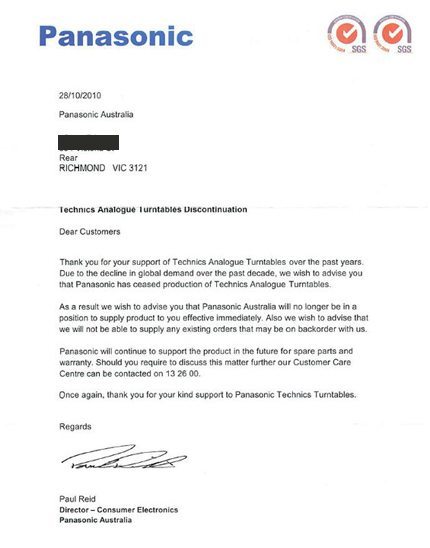
The defacto dj tool for decades, this turntable holds a special place in the hearts and minds of many djs. Most turntable based jockeys refuse to play on anything else and its easy to understand why. They are rock solid reliable, easy to use and built to withstand the brutal beating they receive night in, night out. In 1996, I pawned 3 guitars to purchase my first pair of 1200’s and after years of gigs, several cross country trips, and countless falls they are still spinning in the TechTools office today.
THE THIRD ELEMENT
Besides their fantastic construction, there was one important element in the this turntable that separated it from the rest and enabled a entire new field of music: “turntablism”
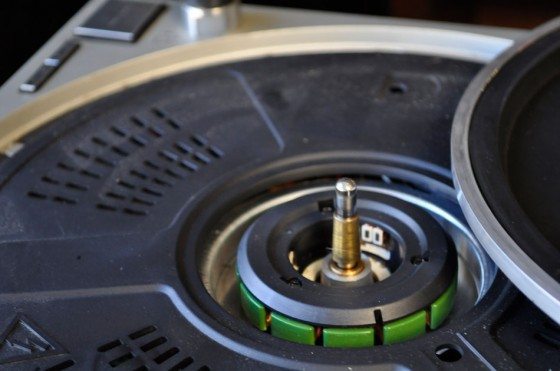
That feature is the coveted direct drive system, which uses magnets to propel the platter in a rapid way that belts never could. This “third element”: magnets, is a force expertly leveraged by turntablists to enable them to do things with a linear peice of audio that the bare hands alone could not achieve. Its also an effect that controllers have yet to really duplicate well.
A GREAT INSTRUMENT
Turntablists like Q-bert above, have shown that the simple turntable combined with a mixer can be a remarkably expressive instrument. When used with great dexterity and extensive practice it can produce the full range of musical expression including attack, decay, amplitude and tone- all from a single sample!
THE END?
The good news is that with so many of these turntables in circulation (3.5 million sold since 1976), and their robust build quality- there will always be turntables available for those that want them. Controllers will continue to get better and hopefully, someday, reach the level of quality required to replace such a historic instrument with features and performance that live up to tough demands of djs, controllerists, and turntablists alike!
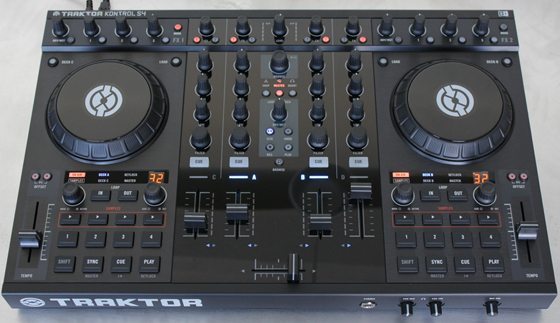
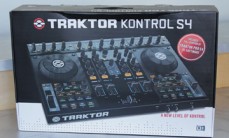 What made the Kontrol S4 so exciting is that it’s the first 4-deck controller built by Native Instruments for its popular Traktor Pro platform. In addition, the German company designed a new program built on the Traktor Pro engine called Traktor Pro S4, which specifically integrates with the Kontrol S4 for tight, smooth operation. Pro S4’s revamped GUI includes a greyscale aesthetic for improved visibility and a simplified master clock section. But the big news for the Pro S4 software are the two sample/loop decks that can stand in for the 3rd and 4th track decks, and the loop recorder that includes layered recording for live improvisation.
What made the Kontrol S4 so exciting is that it’s the first 4-deck controller built by Native Instruments for its popular Traktor Pro platform. In addition, the German company designed a new program built on the Traktor Pro engine called Traktor Pro S4, which specifically integrates with the Kontrol S4 for tight, smooth operation. Pro S4’s revamped GUI includes a greyscale aesthetic for improved visibility and a simplified master clock section. But the big news for the Pro S4 software are the two sample/loop decks that can stand in for the 3rd and 4th track decks, and the loop recorder that includes layered recording for live improvisation.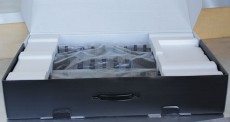 Both of those key additions have corresponding control sections on the Kontrol S4. Even though the Kontrol S4 can be a MIDI controller for other software, it uses NI’s NHL protocol to talk to the Pro S4 software, which allows 30 times more data transfer than MIDI. That translates to very responsive and smooth control that you’ll notice when operating faders or doing filter sweeps and effects tweaks.
Both of those key additions have corresponding control sections on the Kontrol S4. Even though the Kontrol S4 can be a MIDI controller for other software, it uses NI’s NHL protocol to talk to the Pro S4 software, which allows 30 times more data transfer than MIDI. That translates to very responsive and smooth control that you’ll notice when operating faders or doing filter sweeps and effects tweaks.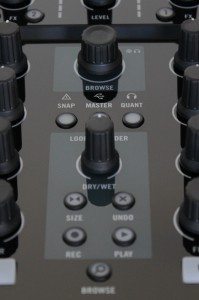 Searching for and loading tracks requires only the Kontrol S4 — no mouse or keyboard. Pressing the Browse button set the software to Browse mode, then use the Loop Move encoders to scroll through the folders and playlists on the left or the Loop Size encoders to scroll through the favorite playlists at the top. Push the encoders to open folders. Once in the folder you want, use the jog wheels or the Browse encoder in the middle to scroll through tracks. Then hit the Load button for the deck you want to load to.
Searching for and loading tracks requires only the Kontrol S4 — no mouse or keyboard. Pressing the Browse button set the software to Browse mode, then use the Loop Move encoders to scroll through the folders and playlists on the left or the Loop Size encoders to scroll through the favorite playlists at the top. Push the encoders to open folders. Once in the folder you want, use the jog wheels or the Browse encoder in the middle to scroll through tracks. Then hit the Load button for the deck you want to load to.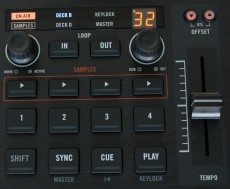 Setting cue points in Traktor Pro S4 is as easy as hitting the Kontrol S4 1-4 Hotcue buttons as a track plays. If you have the Snap button engaged on the hardware, Pro S4 will automatically set the cue point at the nearest beat marker. Shift + Hotcue buttons will delete cue points.
Setting cue points in Traktor Pro S4 is as easy as hitting the Kontrol S4 1-4 Hotcue buttons as a track plays. If you have the Snap button engaged on the hardware, Pro S4 will automatically set the cue point at the nearest beat marker. Shift + Hotcue buttons will delete cue points.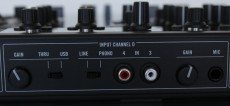 Two audio input sections on the back panel both include stereo RCA inputs with a line/phono switch and grounding. The second input, Channel D, also includes a 1/4-inch microphone input for condenser mics (no phantom power available) with a gain knob for setting mic level on the back and a Mic Vol knob on the front to set the mic level to the master output. Channel D also has a USB/Thru switch for its audio input. When set to USB, the Channel input gets routed through Pro S4’s internal mixer, but when the switch is set to Thru, the Channel D audio input goes straight to the Kontrol S4 master output. That can helpful if your software or computer crashes, and you have an analog deck, iPod or second mixer set up on the Thru channel for quick back-up.
Two audio input sections on the back panel both include stereo RCA inputs with a line/phono switch and grounding. The second input, Channel D, also includes a 1/4-inch microphone input for condenser mics (no phantom power available) with a gain knob for setting mic level on the back and a Mic Vol knob on the front to set the mic level to the master output. Channel D also has a USB/Thru switch for its audio input. When set to USB, the Channel input gets routed through Pro S4’s internal mixer, but when the switch is set to Thru, the Channel D audio input goes straight to the Kontrol S4 master output. That can helpful if your software or computer crashes, and you have an analog deck, iPod or second mixer set up on the Thru channel for quick back-up.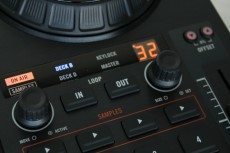 What I appreciate the most about the Kontrol S4 is that it may be the best example yet from a major DJ gear company of embracing what controllerism is really about: creative freedom, improvisation and using the capabilities of modern technology not just to mimic the older paradigm of DJing, but also to continue to redefine what a DJ does or can do. The quick-and-easy looping capabilities, Sample Decks, loop recorder and the interconnectedness that keeps it all in sync and flowing really open up a world of creative possibilities that many DJs still have yet to experience. It makes a lot of sense given that Ean Golden designed the hardware and several of the new software features.
What I appreciate the most about the Kontrol S4 is that it may be the best example yet from a major DJ gear company of embracing what controllerism is really about: creative freedom, improvisation and using the capabilities of modern technology not just to mimic the older paradigm of DJing, but also to continue to redefine what a DJ does or can do. The quick-and-easy looping capabilities, Sample Decks, loop recorder and the interconnectedness that keeps it all in sync and flowing really open up a world of creative possibilities that many DJs still have yet to experience. It makes a lot of sense given that Ean Golden designed the hardware and several of the new software features.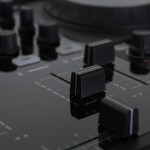 While the Kontrol S4 certainly feels more like a musical instrument than the average DJ controller, I still recommend a good supplemental controller for all the enthusiastic cue point jugglers and hardcore button mashers. The button grids at the bottom of the Kontrol S4 decks work really well for basic DJ transport needs and cue point jumps, but the switches are too stiff to be comfortably played in a very rigorous manner. For that style of DJing you’re still going to want a supplemental performance controller like the Midi-Fighter that has direct FX presets and high-performance buttons.
While the Kontrol S4 certainly feels more like a musical instrument than the average DJ controller, I still recommend a good supplemental controller for all the enthusiastic cue point jugglers and hardcore button mashers. The button grids at the bottom of the Kontrol S4 decks work really well for basic DJ transport needs and cue point jumps, but the switches are too stiff to be comfortably played in a very rigorous manner. For that style of DJing you’re still going to want a supplemental performance controller like the Midi-Fighter that has direct FX presets and high-performance buttons.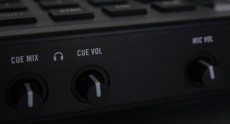 For beginners, the Kontrol S4 + a laptop might seem like a steep investment, considering the system requirements call for a recent, robust machine. Then again, many people already have nice laptops to begin with, and there’s plenty of DJ gear out there breaking the 4-digit barrier. The comprehensive manual does attempt to cater to beginners as well, trying to make Traktor Pro less intimidating to the newbies.
For beginners, the Kontrol S4 + a laptop might seem like a steep investment, considering the system requirements call for a recent, robust machine. Then again, many people already have nice laptops to begin with, and there’s plenty of DJ gear out there breaking the 4-digit barrier. The comprehensive manual does attempt to cater to beginners as well, trying to make Traktor Pro less intimidating to the newbies.
Native Instruments Traktor Kontrol S4 Review

Time to exhale; the Traktor Kontrol S4 four-deck controller for Traktor Pro is here, and DJ Tech Tools has a full review. Native Instruments’ first all-in-one, 4-channel controller/soundcard for Traktor Pro comes with the specialized Traktor Pro S4 software, as well as some lofty expectations. Let’s find out where the S4 lives up to the hype, and where it may fall a bit short.
Reviewed: Native Instruments Kontrol S4
Price: $999 (MSRP), $899 (common retail price)
Communication: MIDI over USB (requires power supply) / (Mac and Windows)
Available: Now in the web Store
Weight: 7.5 pounds (3.4 kg)
Dimensions: 19.7 x 12.7 x 2 inches (50 x 32.2 x 5.2 cm)
Minimum System Specs: Windows XP (latest Service Pack, 32-bit) or Vista/7 (32-bit or 64-bit), Core2 or AMD X2, 2 GB RAM / Mac OS X 10.5 or higher, Intel Core Duo 1.66 GHz, 2 GB RAM
Recommended System Specs: Windows 7 (latest Service Pack, 32-bit or 64-bit), Core2 Duo / AMD X2 2.00 GHz or Core i5, 4 GB RAM / Mac OS X 10.6, Intel Core2 Duo 2.00 GHz or Core i5, 4 GB RAM
THE GOOD:
All-in-one 4-deck software/controller/audio interface system based on tried and true Native Instruments technology. Comes with Traktor Pro S4 with new Sample Decks and Loop Recorder. MIDI compatibility for other gear and software, but much higher resolution control between the hardware and Traktor Pro S4. Two analog inputs and excellent Audio 4 DJ-like sound quality.
All-in-one 4-deck software/controller/audio interface system based on tried and true Native Instruments technology. Comes with Traktor Pro S4 with new Sample Decks and Loop Recorder. MIDI compatibility for other gear and software, but much higher resolution control between the hardware and Traktor Pro S4. Two analog inputs and excellent Audio 4 DJ-like sound quality.
THE BAD:
No price break yet for licensed Traktor Pro users. Operating on USB bus power alone is not recommended due to dim LEDs. Big-time cue point juggler and button mashing controllerists will probably still want a supplemental “grid” controller. No group saving of sample sets. Not compatible with DVS systems yet (NI says this is coming soon).
No price break yet for licensed Traktor Pro users. Operating on USB bus power alone is not recommended due to dim LEDs. Big-time cue point juggler and button mashing controllerists will probably still want a supplemental “grid” controller. No group saving of sample sets. Not compatible with DVS systems yet (NI says this is coming soon).
THE BOTTOM LINE:
Native Instruments has delivered on its promise to create an all-in-one 4-deck Traktor Pro system with admirable software/hardware integration, a nod to the burgeoning controllerist community, and a soundcard that’s actually worth using. By not trying to be all things to all DJs, they’ve designed a system that may not be exactly what you want, but is closer to it than anything else this year.
Native Instruments has delivered on its promise to create an all-in-one 4-deck Traktor Pro system with admirable software/hardware integration, a nod to the burgeoning controllerist community, and a soundcard that’s actually worth using. By not trying to be all things to all DJs, they’ve designed a system that may not be exactly what you want, but is closer to it than anything else this year.
HARDWARE/SOFTWARE INTEGRATION
 What made the Kontrol S4 so exciting is that it’s the first 4-deck controller built by Native Instruments for its popular Traktor Pro platform. In addition, the German company designed a new program built on the Traktor Pro engine called Traktor Pro S4, which specifically integrates with the Kontrol S4 for tight, smooth operation. Pro S4’s revamped GUI includes a greyscale aesthetic for improved visibility and a simplified master clock section. But the big news for the Pro S4 software are the two sample/loop decks that can stand in for the 3rd and 4th track decks, and the loop recorder that includes layered recording for live improvisation.
What made the Kontrol S4 so exciting is that it’s the first 4-deck controller built by Native Instruments for its popular Traktor Pro platform. In addition, the German company designed a new program built on the Traktor Pro engine called Traktor Pro S4, which specifically integrates with the Kontrol S4 for tight, smooth operation. Pro S4’s revamped GUI includes a greyscale aesthetic for improved visibility and a simplified master clock section. But the big news for the Pro S4 software are the two sample/loop decks that can stand in for the 3rd and 4th track decks, and the loop recorder that includes layered recording for live improvisation. Both of those key additions have corresponding control sections on the Kontrol S4. Even though the Kontrol S4 can be a MIDI controller for other software, it uses NI’s NHL protocol to talk to the Pro S4 software, which allows 30 times more data transfer than MIDI. That translates to very responsive and smooth control that you’ll notice when operating faders or doing filter sweeps and effects tweaks.
Both of those key additions have corresponding control sections on the Kontrol S4. Even though the Kontrol S4 can be a MIDI controller for other software, it uses NI’s NHL protocol to talk to the Pro S4 software, which allows 30 times more data transfer than MIDI. That translates to very responsive and smooth control that you’ll notice when operating faders or doing filter sweeps and effects tweaks.THE HARDWARE STORY
Much has been made about the Kontrol S4’s size, which at almost 20 inches wide and 13 inches deep, is significantly larger than the Vestax VCI-100, and is even bigger than the bulky M-Audio Xponent. Large DJ bags I have that accommodate those two controllers couldn’t fit the Kontrol S4, but Native Instruments does have a flight case/performance stand available for $189 MSRP, and you can bet that compatible bags and cases will be popping up (one DJTT reader suggests the Camelbak Motherlode).
Despite the unit’s size, it’s weight, at only 7.5 pounds, is good news for weary backs and shoulders. Hauling it around is an easy task, but that brings up questions of durability. If you’re familiar with NI’s Maschine, the Kontrol S4 brings a very similar build quality, with aluminum plating over the two decks and a plastic case. By no means does it feel flimsy, but neither is it built to absorb relentless poundings for decades on end like Technics 1200 turntables. The bottom line is that you’ll want to protect this investment well if you’re taking it to gigs.
Two decks on either side of the unit showcase identical control sets. An effects section sits above the jogwheel, and a highly responsive pitch fader flanks the loop/sample/cue/transport section.
The four-channel mixer section features 3-band EQ and a filter for each channel. Beautiful blue-and-orange LED meters show the pre-fader level for each channel. If you get clipping on the meter, adjust the level down using the channel’s Gain encoder, and at any time you can push the encoder to return to the original gain level. The filters and EQ sound warm and creamy, and the high-resolution action on them is great. However, I’m dismayed at the absence of EQ kill controls for each of the three bands.
Kontrol S4’s rubberized knobs and push-button endless rotary encoders feel solid and sturdy with a satisfying action, as do to 60 mm pitch and channel faders. Six rubber feet on the bottom secure the unit to a tabletop.
JOG WHEELS
Many people want to know how the Kontrol S4 jog wheels are for scratching. The short answer is that they are excellent for scratching… for controller jog wheels. Their tops plates are touch-sensitive and switch-activated (like the CDJ jog wheels), so scratching with them gives you an accurate sense of timing for releasing the “record.” Also, they are high-resolution wheels, with 1,000 points per revolution, and as a result, their responsiveness is excellent. Personally, I prefer larger wheels or scratching, and even without that caveat, these aren’t going to the be the vinyl-killing jog wheels for turntablists. While on the subject of scratching, I’ll mention that the Kontrol S4’s crossfader is one of the nicest I’ve felt on any non-Vestax DJ controller. However, it does not live up to high-end crossfaders on scratch mixers, and it is not officially replaceable.
The jog wheels’ rubberized, outer rims provide a nice grip for tempo bending, and their magnetic resistance aids in giving you very sensitive and precise tempo bending.
You can also press Shift and use a jog wheel to quickly scroll forward and backward on a deck’s track. It’s the fastest way to skip to a certain part of a track on the S4.
BROWSING TRACKS
 Searching for and loading tracks requires only the Kontrol S4 — no mouse or keyboard. Pressing the Browse button set the software to Browse mode, then use the Loop Move encoders to scroll through the folders and playlists on the left or the Loop Size encoders to scroll through the favorite playlists at the top. Push the encoders to open folders. Once in the folder you want, use the jog wheels or the Browse encoder in the middle to scroll through tracks. Then hit the Load button for the deck you want to load to.
Searching for and loading tracks requires only the Kontrol S4 — no mouse or keyboard. Pressing the Browse button set the software to Browse mode, then use the Loop Move encoders to scroll through the folders and playlists on the left or the Loop Size encoders to scroll through the favorite playlists at the top. Push the encoders to open folders. Once in the folder you want, use the jog wheels or the Browse encoder in the middle to scroll through tracks. Then hit the Load button for the deck you want to load to.To preview a track in the headphone cue, browse to it and push the Browse encoder. That start the preview player, and you can use the Browse encoder to skip through the track as you listen. It’s also possible to copy any track, sample, or recorded loop from one deck for effect slot to another.
The browsing and loading process is simple and efficient — everything a digital DJ should want out of a hardware controller. I do however wish that Shift + Loop Move would scroll through folders at a higher speed, as my iTunes library has hundreds of folders in it.
FOUR DECKS & FX
Traktor Pro S4’s decks A and B are always set as Track Decks, whereas decks C and D can be each configured as a Track Deck, Sample Deck or Live Input to play audio from the two analog inputs. You can for instance have three Track Decks and one Sample Deck, or two Track Decks and two Live Inputs, etc.
Each of the four decks can be routed to FX1, FX2 or both, by activating the FX buttons under the Gain knobs on each mixer channel. The Mode button on each FX Unit toggles between Group mode (three effects at once) and Single effect mode (one effect with three editable parameters). In Single mode, Shift + FX On scrolls through the list of 28 effects to choose from, and in Group mode, Shift + FX buttons 1-3 selects from the list. Another wishlist item here: make effect selection faster by using Shift + the FX Units knobs.
If you activate four FX Units in Preferences, FX Units 1-4 will be assigned to decks A-D respectively, and that cannot be changed. Other than that, using four deck can be fun, but there is seemingly a quirk in the software where a sample Deck C or D that was pulled from Deck A or B will still be assigned to the FX for Deck A and B rather than their own FX Unit.
For those unfamiliar with Traktor, I’ll just say briefly that the effects on offer draw from NI’s extensive effects expertise. They all sound great and many of them are remarkably expressive, especially when you dig into them in Single mode. From basic delay and reverb to live remixing effects like Beat Slicer and Beat Masher or the beautifully mutating Flanger Pulse and Reverse Grain, there’s enough here to keep you engrossed for hours of practice. With two FX Units in Group mode, you can have up to six tempo-synced effects on a single source… if you dare.
CUE POINTS AND LOOPS
 Setting cue points in Traktor Pro S4 is as easy as hitting the Kontrol S4 1-4 Hotcue buttons as a track plays. If you have the Snap button engaged on the hardware, Pro S4 will automatically set the cue point at the nearest beat marker. Shift + Hotcue buttons will delete cue points.
Setting cue points in Traktor Pro S4 is as easy as hitting the Kontrol S4 1-4 Hotcue buttons as a track plays. If you have the Snap button engaged on the hardware, Pro S4 will automatically set the cue point at the nearest beat marker. Shift + Hotcue buttons will delete cue points.Many of us can’t or don’t want to live with a measly four cue point triggers, so you have the option in Preferences to set the Samples buttons to be Hotcues 5-8. However, what would be even better is to be able to cycle through the function of the Samples buttons on the fly somehow, without have to open Preferences.
The small display and first row of controls beneath the jog wheel control your loops. The Loop size encoder sets the length of a loop (1/32, 1/16, 1/8, 1/4, 1/2, 1, 2, 4, 8, 16 or 32 beats). Pushing Loop Size then sets a loop of that length automatically. Use the encoder to lengthen or shorten the loop on the fly, and then exit the loop by pushing Loop Move.
You can set loops manually with the Loop In and Out buttons and fine tune the in/out points if needed by holding down the Loop In/Out buttons and using the jog wheel.
Once a loop is set, the Loop Move encoder moves it forward or backward in the track according to the displayed loop length. You can store an active loop to an empty Hotcue slot by pressing a Hotcue button. Loop Hotcue light up green, while cue point Hotcues light up blue.
SAMPLE DECKS AND LOOP RECORDER
Traktor Pro S4’s Sample Decks have four sample slots each for holding one-shots or loops of up to 32 beats long. Sample Decks C and D recording from and sync to the tempo of Track Decks A and B respectively. You can fill the sample slots by either loading them from your Track Collection, creating a loop and assigning it to a Sample button, or creating a sample based on the current loop length by hitting an empty Sample button, either while the Track Deck is playing or stopped.
Once you have samples in slots, press the Sample buttons once to trigger playback and again to stop. For more control over the samples, switch to Deck C or D. Then the Hotcue buttons become re-trigger buttons for each sample, and the jog wheel applies to them for sample scratching or tempo bending. Also, the Loop Move encoder becomes a sample volume knob, while Loop Size become a sample filter. All the while, you still have full mixer channel control over the Sample Deck and FX options as well.
The Loop Recorder can record from either the Main Output of Traktor Pro S4, the output of any deck with the Cue button activated, or from the Aux input, which is likely to be a microphone plugged into Channel D of the Kontrol S4. In the S4’s Loop Recorder section, press the Size button to scroll through recorded loop sizes of 4, 8, 16, or 32 beats (synced to the master tempo). Press Rec and record your loop. When finished, your recording will play back, and you can adjust the Dry/Wet knob to mix the loop with the rest of the audio. At this point, you can hit Undo to scrap the recording, record again to overdub a layer, or bounce the recording to an empty sample slot.
If all the sample slots are full, you can clear them out by pressing Shift + Sample button. Don’t worry, all your samples are saved automatically to your collection in the All Samples favorite folder. One area NI could improve on in a software update is to make it possible to save and then reload groups of 2-8 samples with group names, so a DJ could really exploit the ability of the Sample Decks to be the foundation of a completely original set.
AUDIO INTERFACE
A built-in 2-in, 2-out audio interface within the Kontrol S4 makes use of the same components and technology as the well-regarded NI Audio 4 DJ interface. You get the same or at least practically identical audio quality in the S4 as in the Audio 4 DJ all the way up to 24-bit/96 kHz resolution.
Connections include two main outputs: balanced 1/4-inch (that can route to XLR inputs with the right cables) and unbalanced RCA. There is no booth output with a separate volume knob, but both main outputs can be used simultaneously and routed to separate speakers.
 Two audio input sections on the back panel both include stereo RCA inputs with a line/phono switch and grounding. The second input, Channel D, also includes a 1/4-inch microphone input for condenser mics (no phantom power available) with a gain knob for setting mic level on the back and a Mic Vol knob on the front to set the mic level to the master output. Channel D also has a USB/Thru switch for its audio input. When set to USB, the Channel input gets routed through Pro S4’s internal mixer, but when the switch is set to Thru, the Channel D audio input goes straight to the Kontrol S4 master output. That can helpful if your software or computer crashes, and you have an analog deck, iPod or second mixer set up on the Thru channel for quick back-up.
Two audio input sections on the back panel both include stereo RCA inputs with a line/phono switch and grounding. The second input, Channel D, also includes a 1/4-inch microphone input for condenser mics (no phantom power available) with a gain knob for setting mic level on the back and a Mic Vol knob on the front to set the mic level to the master output. Channel D also has a USB/Thru switch for its audio input. When set to USB, the Channel input gets routed through Pro S4’s internal mixer, but when the switch is set to Thru, the Channel D audio input goes straight to the Kontrol S4 master output. That can helpful if your software or computer crashes, and you have an analog deck, iPod or second mixer set up on the Thru channel for quick back-up.SOUND QUALITY
I A/B tested the Kontrol S4 against a TC Electronic StudioKonnekt 48 FireWire interface playing the same songs out of the same speakers. Most people, including myself, would consider the StudioKonnekt to be a higher-end interface than NI’s line, but the difference in audio quality was negligible. I felt that the StudioKonnekt pumped out a slightly more defined, warm and round sound, but one could hardly tell the difference. Overall, I’m very pleased with the sound quality of the Kontrol S4.
Its soundcard sends plenty of signal as well. There’s nothing to worry about as far as having a loud enough sound from the S4, either from the main outs or the headphone cue. If you’re using the S4 with only USB bus power, the headphone level dips slightly, but even then it shouldn’t be a problem.
USB BUS POWER VS. POWER ADAPTER
You can run the Kontrol S4 on USB bus power (from a fully powered USB 2.0 bus) with some limitations. In addition to small dip in headphone level, the bigger problem with USB bus power is that the LEDs become extremely dim — so much so that I don’t recommend doing it in daylight or bright light. Even in near darkness the LEDs look very dim when using USB bus power.
I prefer running the Kontrol S4 with a power adapter, but when I pulled the power adapter plug out to see what happened during a session, the audio cut out entirely for a second or two before the USB bus power kicked in and the set resumed. Hotplugging the power cord back in did nothing to disrupt the music.
SUMMARY
 What I appreciate the most about the Kontrol S4 is that it may be the best example yet from a major DJ gear company of embracing what controllerism is really about: creative freedom, improvisation and using the capabilities of modern technology not just to mimic the older paradigm of DJing, but also to continue to redefine what a DJ does or can do. The quick-and-easy looping capabilities, Sample Decks, loop recorder and the interconnectedness that keeps it all in sync and flowing really open up a world of creative possibilities that many DJs still have yet to experience. It makes a lot of sense given that Ean Golden designed the hardware and several of the new software features.
What I appreciate the most about the Kontrol S4 is that it may be the best example yet from a major DJ gear company of embracing what controllerism is really about: creative freedom, improvisation and using the capabilities of modern technology not just to mimic the older paradigm of DJing, but also to continue to redefine what a DJ does or can do. The quick-and-easy looping capabilities, Sample Decks, loop recorder and the interconnectedness that keeps it all in sync and flowing really open up a world of creative possibilities that many DJs still have yet to experience. It makes a lot of sense given that Ean Golden designed the hardware and several of the new software features.It isn’t perfect of course. Traktor Pro S4 is at version 1.0.1 at the time of this review. I’ve pointed out some things I’d like to see, and I’m sure every early S4 user will have his or her own wishlist as well. One other big hole is a complete solution for creating custom user mappings. Right now there is some customization available, but only on top of the default Kontrol S4 mapping.
 While the Kontrol S4 certainly feels more like a musical instrument than the average DJ controller, I still recommend a good supplemental controller for all the enthusiastic cue point jugglers and hardcore button mashers. The button grids at the bottom of the Kontrol S4 decks work really well for basic DJ transport needs and cue point jumps, but the switches are too stiff to be comfortably played in a very rigorous manner. For that style of DJing you’re still going to want a supplemental performance controller like the Midi-Fighter that has direct FX presets and high-performance buttons.
While the Kontrol S4 certainly feels more like a musical instrument than the average DJ controller, I still recommend a good supplemental controller for all the enthusiastic cue point jugglers and hardcore button mashers. The button grids at the bottom of the Kontrol S4 decks work really well for basic DJ transport needs and cue point jumps, but the switches are too stiff to be comfortably played in a very rigorous manner. For that style of DJing you’re still going to want a supplemental performance controller like the Midi-Fighter that has direct FX presets and high-performance buttons.All told, I’m very impressed with Kontrol S4 and hope NI gets going on implementing some user suggestions soon. At around $900 street price, I could see it as a value for someone who’s absolutely sure they will use it extensively, but who also doesn’t already own Traktor Pro. Unfortunately, there’s no price break for licensed Traktor Pro users, even though a large chunk of the value of the purchase has to be the Pro S4 software.
 For beginners, the Kontrol S4 + a laptop might seem like a steep investment, considering the system requirements call for a recent, robust machine. Then again, many people already have nice laptops to begin with, and there’s plenty of DJ gear out there breaking the 4-digit barrier. The comprehensive manual does attempt to cater to beginners as well, trying to make Traktor Pro less intimidating to the newbies.
For beginners, the Kontrol S4 + a laptop might seem like a steep investment, considering the system requirements call for a recent, robust machine. Then again, many people already have nice laptops to begin with, and there’s plenty of DJ gear out there breaking the 4-digit barrier. The comprehensive manual does attempt to cater to beginners as well, trying to make Traktor Pro less intimidating to the newbies.The Kontrol S4 has something to offer digital DJs of all experience levels. The tight integration between hardware and software, super-responsive controls, excellent audio quality and innovative performance and live remixing features in a single package take some of the mystery and hassle out of setting up a DJ system and replace it with a helluva lot of fun.
ABOUT THE AUTHOR: Makkus Rovito was the tech editor for Remix magazine and has written hundreds of technology reviews over the past 10 years. He is also a regular DJ around San Francisco who up until now, has been using the Torq Xponent system.



